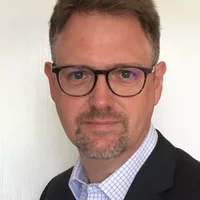The following is a chronological review, including historical landmarks and a selection of highlights from the first 35 years of the Institute's existence.
2024
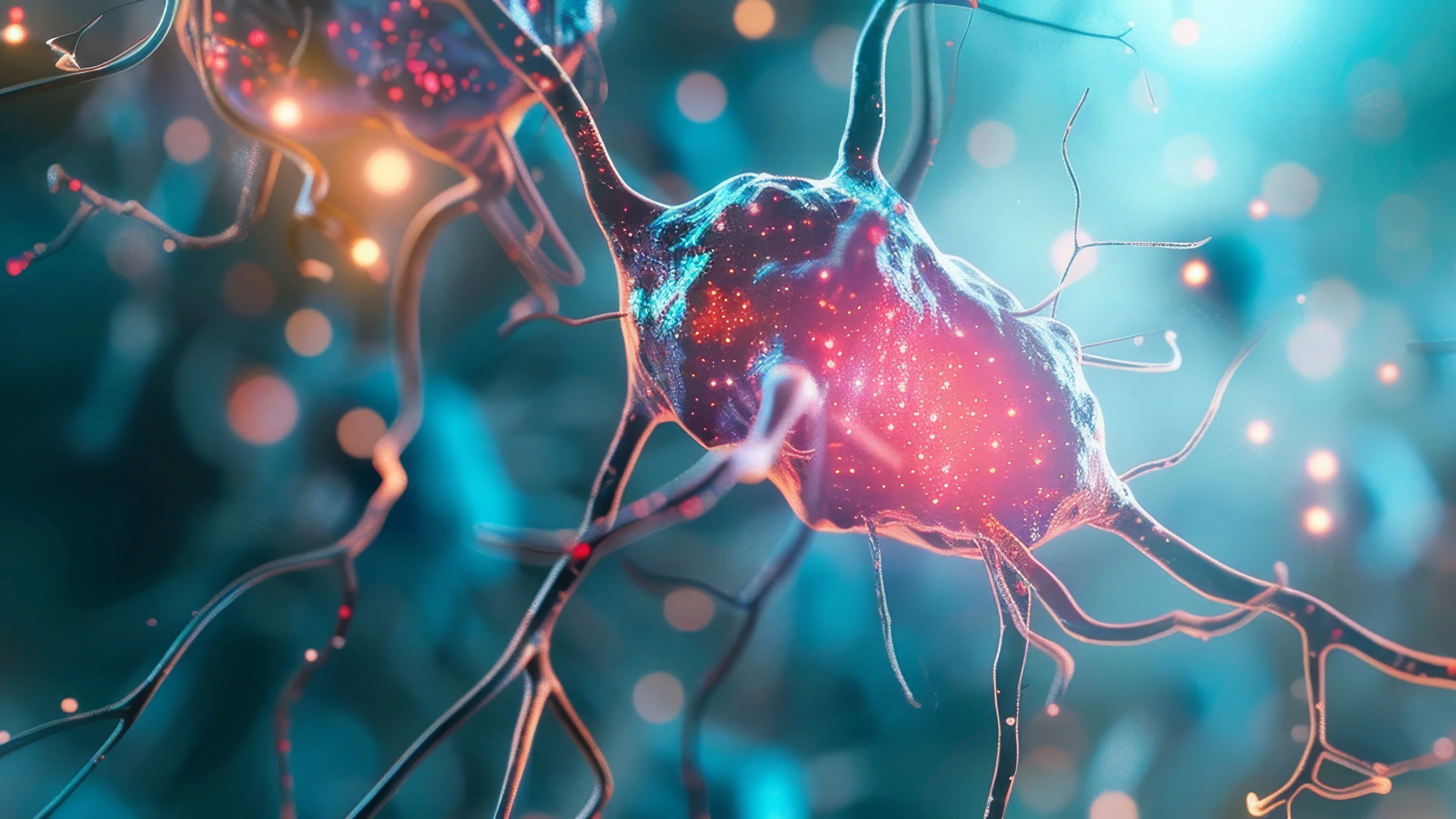
- Green light for IMPACT: Funding for the upgrade of the proton accelerator facility planned for 2025 is secured as part of the ERI Dispatch for 2025-2028.
- The European Space Agency (ESA) opens the “European Space Deep-Tech Innovation Centre” (ESDI) in collaboration with PSI. The centre is located in Park Innovaare, right next to PSI.
- The Hot Laboratory at PSI celebrates its 60th anniversary: this anniversary marks a milestone in the history not only of PSI, but of Swiss nuclear technology as a whole.
- PSI researchers have succeeded in determining the structure of certain photoreceptors. These could allow cellular activities to be switched on and off using light, making them an important tool in biological research and medical applications.
- A new world record for X-rays was set in collaboration with the Swiss Federal Institute of Technology in Lausanne EPFL, ETH Zurich and the University of Southern California. PSI researchers were able to look inside a computer chip at a resolution of 4 nanometres, revealing more details than ever before.
- In collaboration with the Australian National University, PSI researchers have determined the most accurate value yet for the half-life of samarium-146.
- The founding of the Association for Medical Research and Innovation in the canton of Aargau on 3 June brings applied medicine and medical research closer together. This will allow doctors at Aargau hospitals to conduct research for up to two years alongside their clinical work, collaborating with teams at ETH Zurich, Empa or PSI.
- PSI researchers have determined the precise structure of styrene-oxide isomerase for the first time. This enzyme can be used to produce valuable chemicals and drug precursors in environmentally friendly ways.
- 40 years ago, radiotherapy was used at PSI for the first time to treat a rare but highly malignant type of eye cancer. The successful treatment was the first of its kind in Western Europe at the time.
- The Switzerland Innovation Park Innovaare was officially opened on 25 April in the presence of Federal Councillor Guy Parmelin and numerous guests from the worlds of business, science and politics.
- A radiopharmaceutical developed at PSI for treating metastatic neuroendocrine tumours was successfully administered to a patient for the first time.
- The proton accelerator HIPA at PSI is 50 years old and is more powerful than ever: it delivers 1.4 million watts for research.
2023

- SLS 2.0: The Swiss Light Source SLS at PSI is shut down temporarily for a major upgrade. It will go back into operation in 2025, when it will provide X-rays at even higher intensities for scientific experiments that will help shape the future.
- Researchers at PSI are awarded a grant worth US$ 2.6 million by the US National Institute of Health (NIH) as part of its “BRAIN Initiative”. Their aim is to produce a comprehensive map of the mouse brain. The NIH’s decision to invest this amount in a project at a Swiss institute demonstrates the exceptional competitiveness of Swiss researchers and confirms PSI’s position as a centre for world-class research.
- In a world first, PSI has recorded tomograms revealing what happens at a microscopic level when ceramics are printed in 3D using a laser. These findings will help to improve this promising technique.
- Researchers at PSI identify so-called sesquiterpenes – gaseous hydrocarbons that are released by plants – as being a major factor in cloud formation. This finding could reduce uncertainties in climate models and help to make more accurate predictions.
- As part of a European phase III study, the first patient with oesophageal cancer has been treated at PSI using proton therapy. This marks a further step in the management of oesophageal carcinomas, with a view to improving treatment.
- PSI is participating in the European Space Agency's (ESA) JUICE mission to the planet Jupiter and its moons. Among other things, the high-tech detector RADEM will provide information about the complex radiation conditions and the highly dynamic magnetic environment of the Jupiter system.
- For the first time, PSI researchers have succeeded in diagnosing tumours based on changes in the appearance of blood cells. Using artificial intelligence, they were able to distinguish between healthy individuals and those with tumours with an accuracy of around 85 percent.
2022
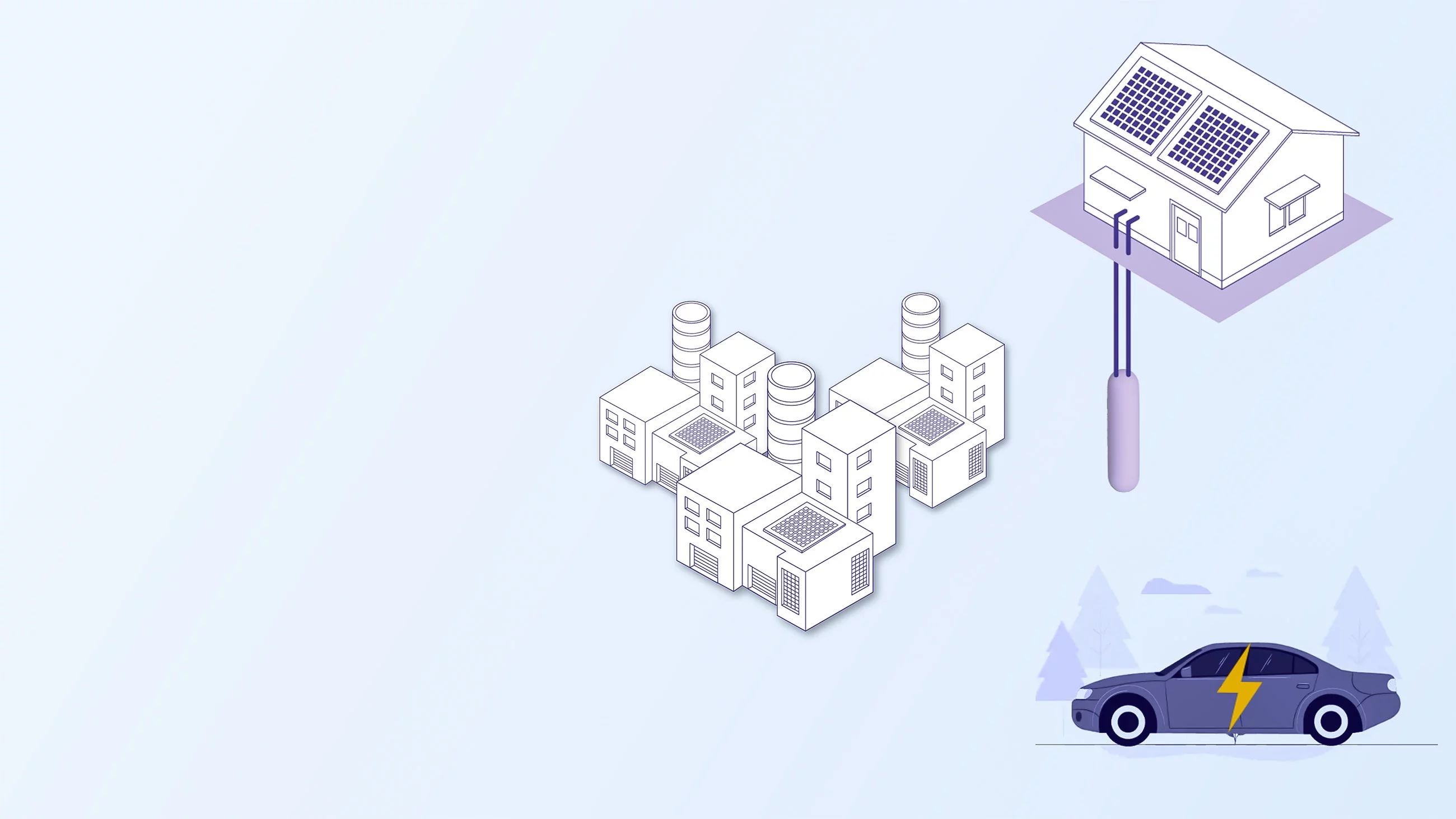
- On 23 October, the Paul Scherrer Institute PSI opens its doors to the public for an Open Day. At more than 40 interactive stations, 15,000 visitors are able to experience first-hand the many different areas of research carried out at PSI.
- How can Switzerland achieve the energy transition and reach its goal of net zero greenhouse gas emissions by 2050 – at the lowest possible cost, while also guaranteeing the security of the energy supply? PSI scientists are providing answers with the help of a computer model of an unparalleled scale and sketching out various scenarios for the future of energy.
- Swissmedic approves the new pharmaceutical laboratory, which will manufacture radiopharmaceuticals at PSI. A total of three state-of-the-art production units will now be able to move novel and innovative medicines swiftly forward for use in clinical settings.
- Research scientists have measured the composition of particulate matter at 22 locations in Europe. The result of this PSI-led international study is a European map of the most significant sources of aerosols. These findings can be used to control air pollution more effectively and so promote public health.
- On 15 May 2022, the new exhibition in the visitor centre “psi forum” is opened to the general public. It shows how the largest research institute within the ETH Domain and in Switzerland is contributing to the key issues facing society, from the energy transition to fighting cancer and developing technologies.
- Researchers from PSI and the University of Basel have developed a Covid 19 rapid test. The novel principle on which it is based promises to offer reliable and quantifiable evidence for a patient’s Covid 19 condition and show how the disease is progressing – as well as providing evidence of other potential illnesses and Covid variants.
2021
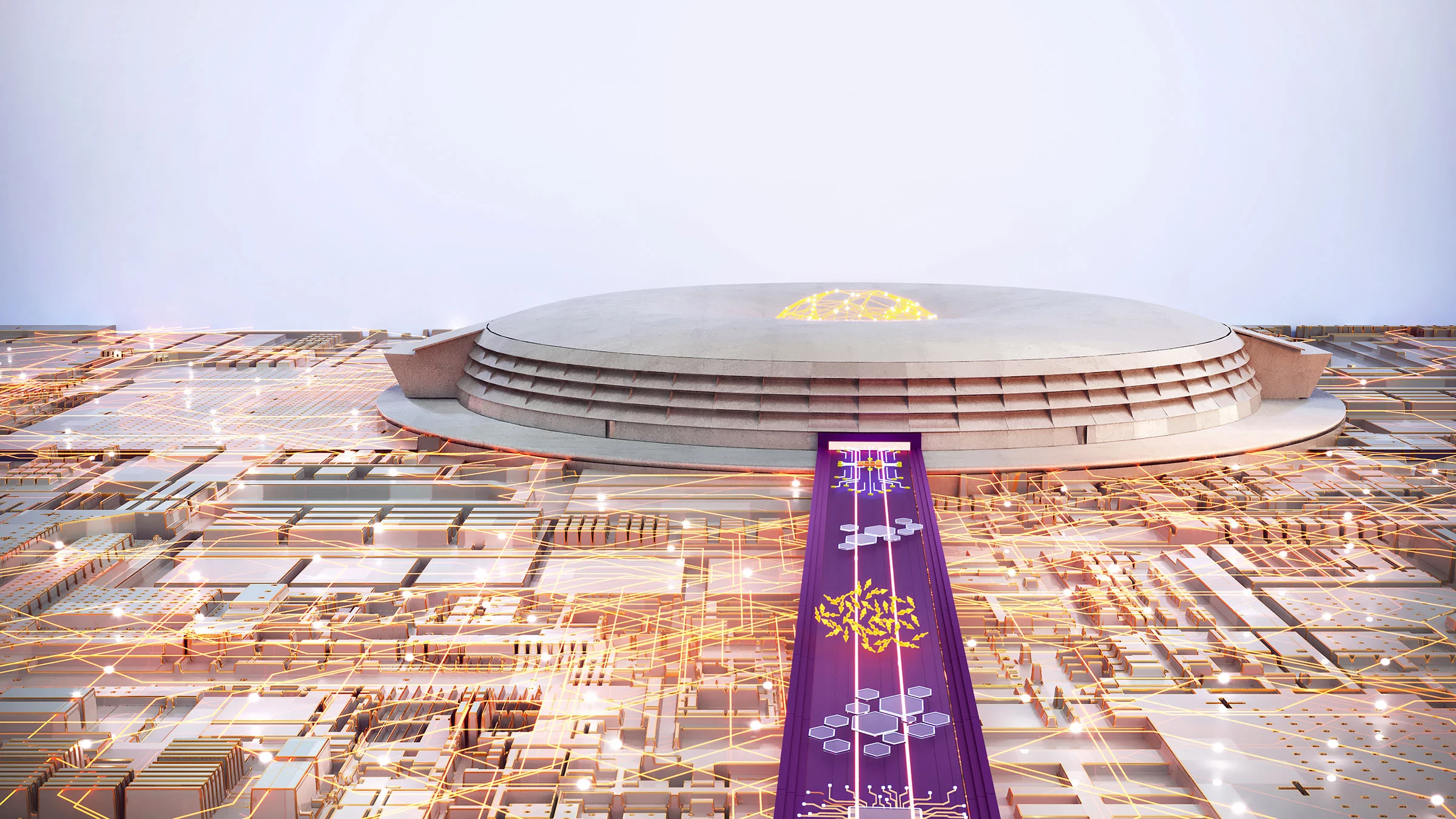
- The Paul Scherrer Institute PSI delivers a central component for the ESTIA reflectometer of the European Spallation Source ESS to Lund, Sweden. The ESS is scheduled to go into operation in 2026 as the world’s most powerful neutron source. Researchers from all over the world want to use the ESS facilities to investigate processes and structures on an atomic scale and take materials research to a new level.
- On 9 November 2021, a patient suffering from lung cancer is irradiated with protons at the Paul Scherrer Institute, the first time this has been done in Switzerland. PSI has extensive experience with proton therapy and has been successfully treating patients with tumours in the neck and head region, as well as in the trunk of the body, since 1996. Now inoperable lung tumours have been added to the list.
- The six-year research project SURE (SUstainable and Resilient Energy for Switzerland) is launched at PSI. In this project, researchers from ten institutions led by PSI are investigating how the energy supply in Switzerland can be made as sustainable and uninterrupted as possible over the coming decades.
- PSI launches several initiatives and new foundations, consolidating its involvement in the field of data sciences. For example, a further site is being built on the institute’s premises for the Swiss Data Science Center. In collaboration with ETH Zurich, a centre for the development of quantum computers is being opened, the so-called Quantum Computing Hub. The goal is to advance the implementation of quantum computers based on both ion traps and superconducting components. In addition, PSI is setting up the new research division “Scientific Computing, Theory and Data”.
- In experiments at PSI, an international research collaboration has measured the radius of the atomic nucleus of helium with five times greater precision than ever before. The new value can be used to test fundamental physical theories.
2020
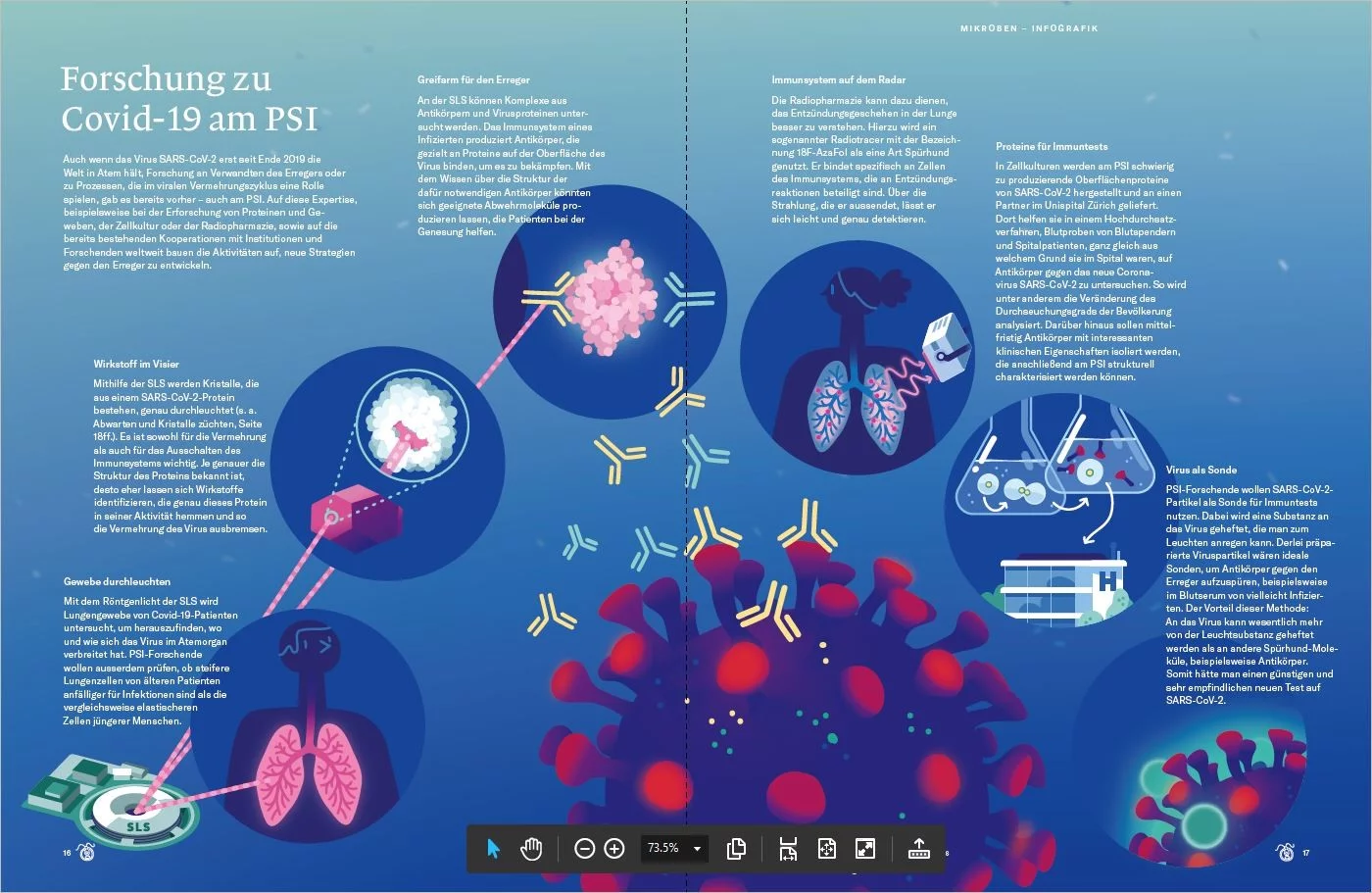
- The global coronavirus pandemic also affects PSI. The Federal Council declares an "extraordinary situation" in Switzerland. On the same day, the Paul Scherrer Institute steps up operational restrictions to the third highest level, allowing a maximum of 20 percent of all PSI employees to be present on campus. Proposals for research on the Covid-19 virus are given priority. For this, among other things, the Swiss Light Source SLS remains in operation. Proton therapy is one of the other priority operating units. The treatment of cancer patients continues without interruption.
- On April 1, Christian Rüegg assumes office as the new director of PSI. He takes the helm at a demanding time. The coronavirus pandemic is a major challenge for large organisations and employers such as PSI.
- The Dispatch on the Promotion of Education, Research and Innovation (ERI) for the years 2021 to 2024 is enacted in the Swiss Parliament. Among other things, this contains the budget the ETH Domain will receive for the coming years. It also includes the budget of more than 99 million Swiss francs needed for the planned renovation of the Swiss Light Source SLS. And with that the upgrade project, called SLS 2.0, gets the green light.
- The second beamline at the X-ray free-electron laser SwissFEL is put into operation. With that the team achieves a milestone: running the already operational Aramis beamline and the new Athos beamline in parallel. Experiments with Athos should be able to follow chemical reactions and show, for example, how catalysts work or how biomolecules cause hereditary diseases.
- The European Research Council (ERC) grants ten million euros in funding to an interdisciplinary joint project on structural and biophysical analysis of selected photoreceptors and their development into so-called OptoGPCRs, light-controlled molecular switches with a wide range of applications in biology and medicine. The corresponding principal investigator is Gebhard Schertler, head of the Biology and Chemistry Division at PSI.
2019
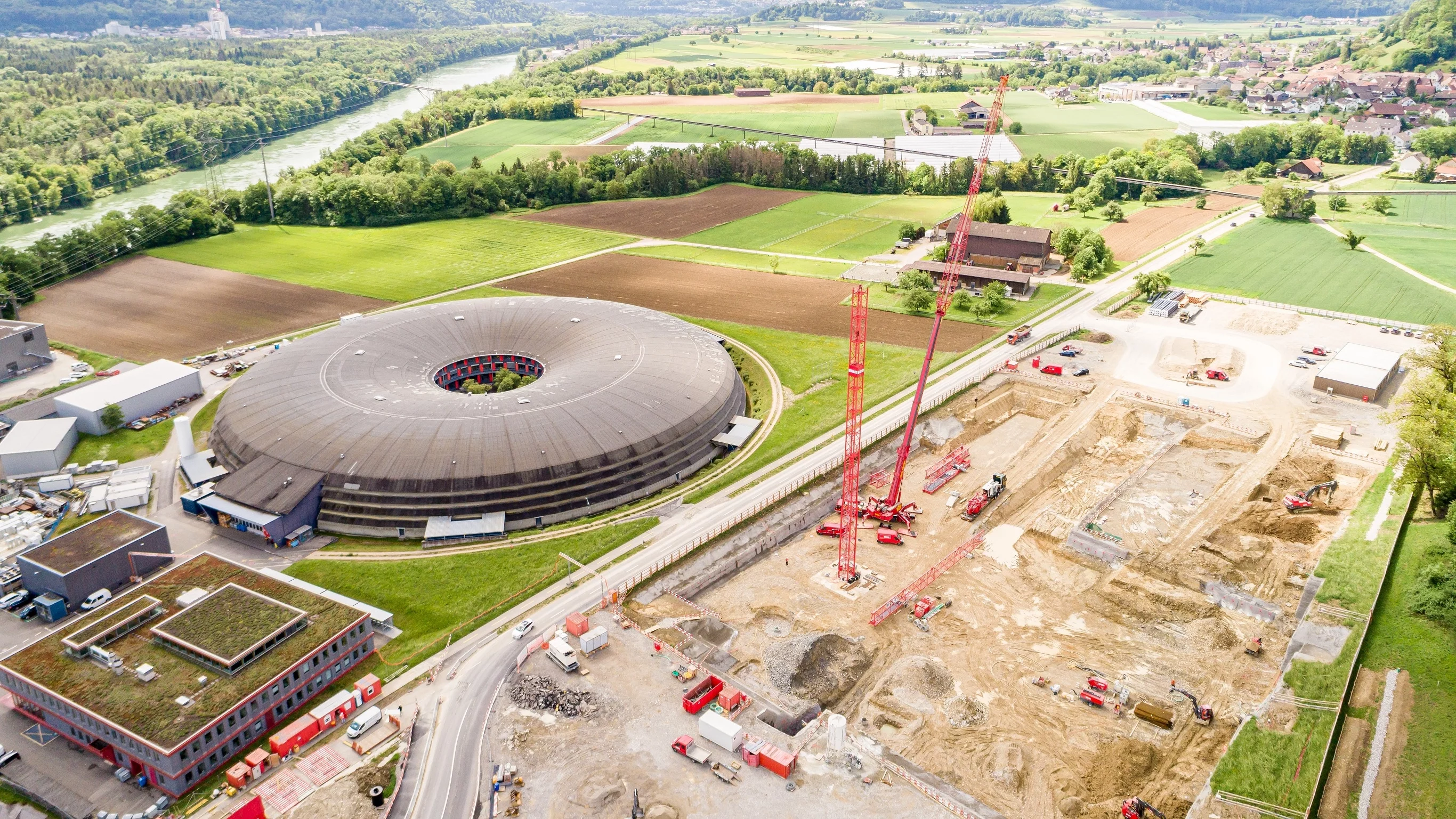
- Following his appointment by the Federal Council in October 2018, PSI Director Joël Mesot became the new President of ETH Zurich on 1 January.
- SwissFEL, the newest large research facility at the Paul Scherrer Institute, is now complete. Regular operation of the first beamline, called Aramis, begins in January 2019. Athos, the second beamline, is to follow in 2020. SwissFEL is one of only five comparable facilities on this scale worldwide.
- Groundbreaking for the innovation campus Park innovaare: This unique site, where the Paul Scherrer Institute PSI will rent around 70 percent of the space, offers an ideal environment for industrial firms that want to develop their innovations in close collaboration with research. Park innovaare thus opens up new development opportunities for the more than 700 active collaborations between PSI and industry.
- The German research icebreaker Polarstern sets out on the largest polar expedition in history and will spend around 13 months in the Arctic. The expedition is called MOSAiC, Multidisciplinary drifting Observatory for the Study of Arctic Climate. Also on board is a research project of the Paul Scherrer Institute PSI to investigate atmospheric chemistry.
- Researchers from the Paul Scherrer Institute PSI and ETH Zurich have developed a micromachine that can execute a variety of actions. Nanomagnets in components of the microrobot are magnetically preprogrammed to enable the control of different movements by magnetic fields. Such machines, measuring only a few micrometres, might for example be used to perform small operations inside the human body.
- Starting gun for ReMaP, the Renewable Management and Real-Time Control Platform. This links PSI's research and development platform ESI with ETH Zurich, as well as with Empa's research and development platforms NEST, move and ehub, in terms of control technology. Thus the systems can be operated and investigated within a network and will contribute to clarifying important open questions within the framework of Switzerland's Energy Strategy 2050.
2018
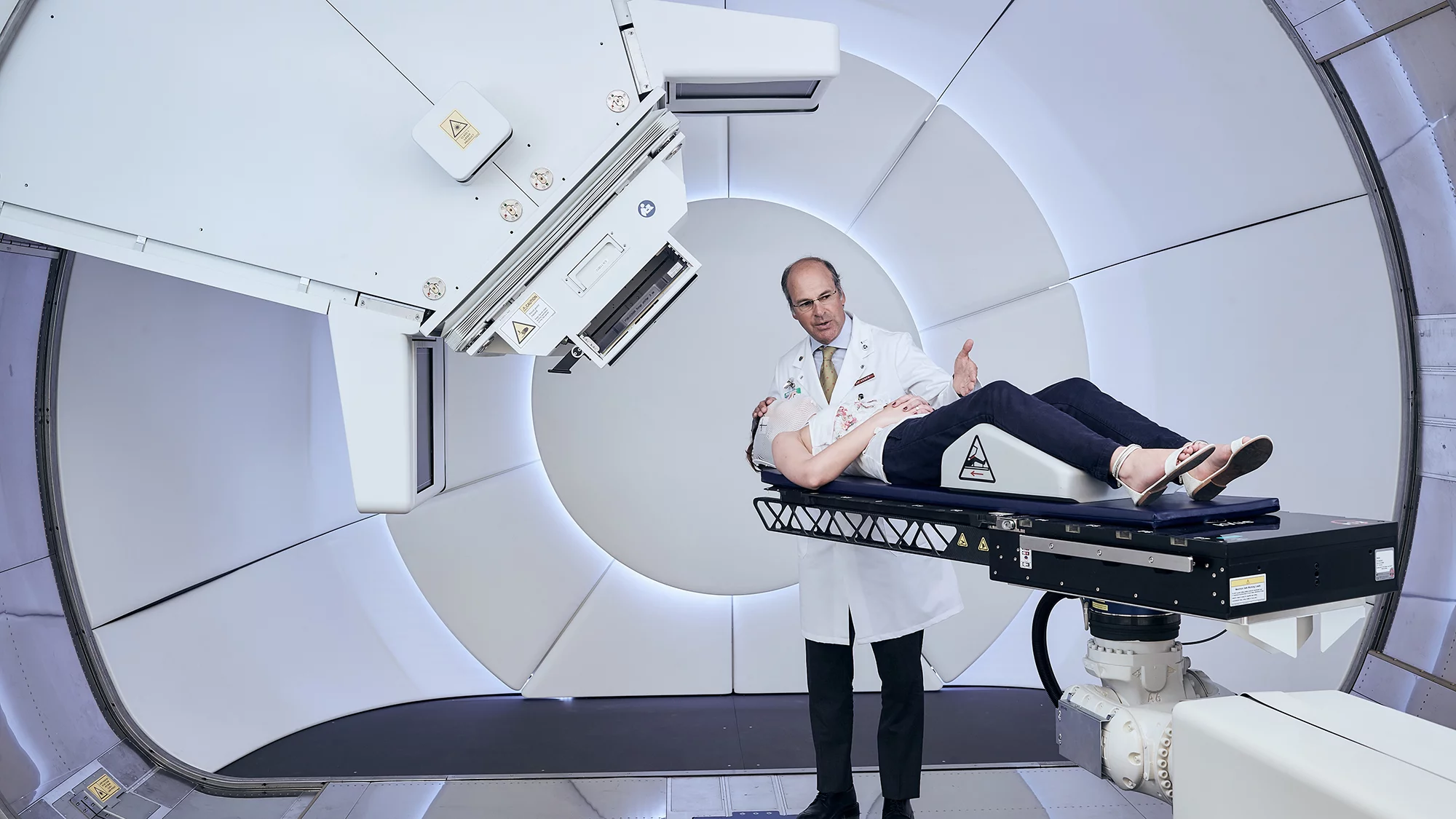
- The use of multiferroic materials promises to enable more energy-efficient computers, since an electric field would suffice for magnetic data storage. Researchers at PSI have made one such material fit to handle the operating temperatures of computers.
- PSI has turned 30 years old. In an anniversary event, the Institute renders an account for its stakeholders of 30 years of research funded by the Swiss taxpayers. The Institute is able to demonstrate to its financial supporters and research partners that the money is well invested. And it shows results that everyone in Switzerland can profit from today.
- A PSI-developed radioactive agent against a particularly malignant form of thyroid cancer has the potential to become a blockbuster drug. Due to its structure, it may also dock with cells of other tumours and destroy them with its radiation. The Lausanne-based biopharmaceutical company Debiopharm wants to further develop the active ingredient from PSI until it is approved for medicinal use.
- The electronics industry expects a novel high-performance transistor made from gallium nitride to deliver significant advantages over the high-frequency transistors currently in use. Researchers at PSI have now, for the first time, watched the electrons in a transistor as they flow. The insights thus gained will help to develop faster and more efficient transistors – a basic prerequisite for the conversion of communication networks to the 5G standard.
- In a joint project with the University Hospital Zurich and the University of Zurich, PSI has expanded its proton therapy capacity with a state-of-the-art treatment facility: the new Gantry 3.
- In diesel engines, combustion of the fuel produces nitrogen oxides (NOx), which are harmful to human health. To reduce these emissions, the automotive industry adds gaseous ammonia to the exhaust. Yet this process does not work optimally at low temperatures. Scientists at PSI have now made a discovery on the molecular level that offers a remedy in the engine. With this knowledge, manufacturers can improve the effectiveness of their catalytic converters for diesel vehicles.
- Using energy from biowaste efficiently: For this important contribution to a sustainable energy supply, PSI and the power company Energie 360° were awarded the Watt d'Or 2018 by the Swiss Federal Office of Energy.
2017
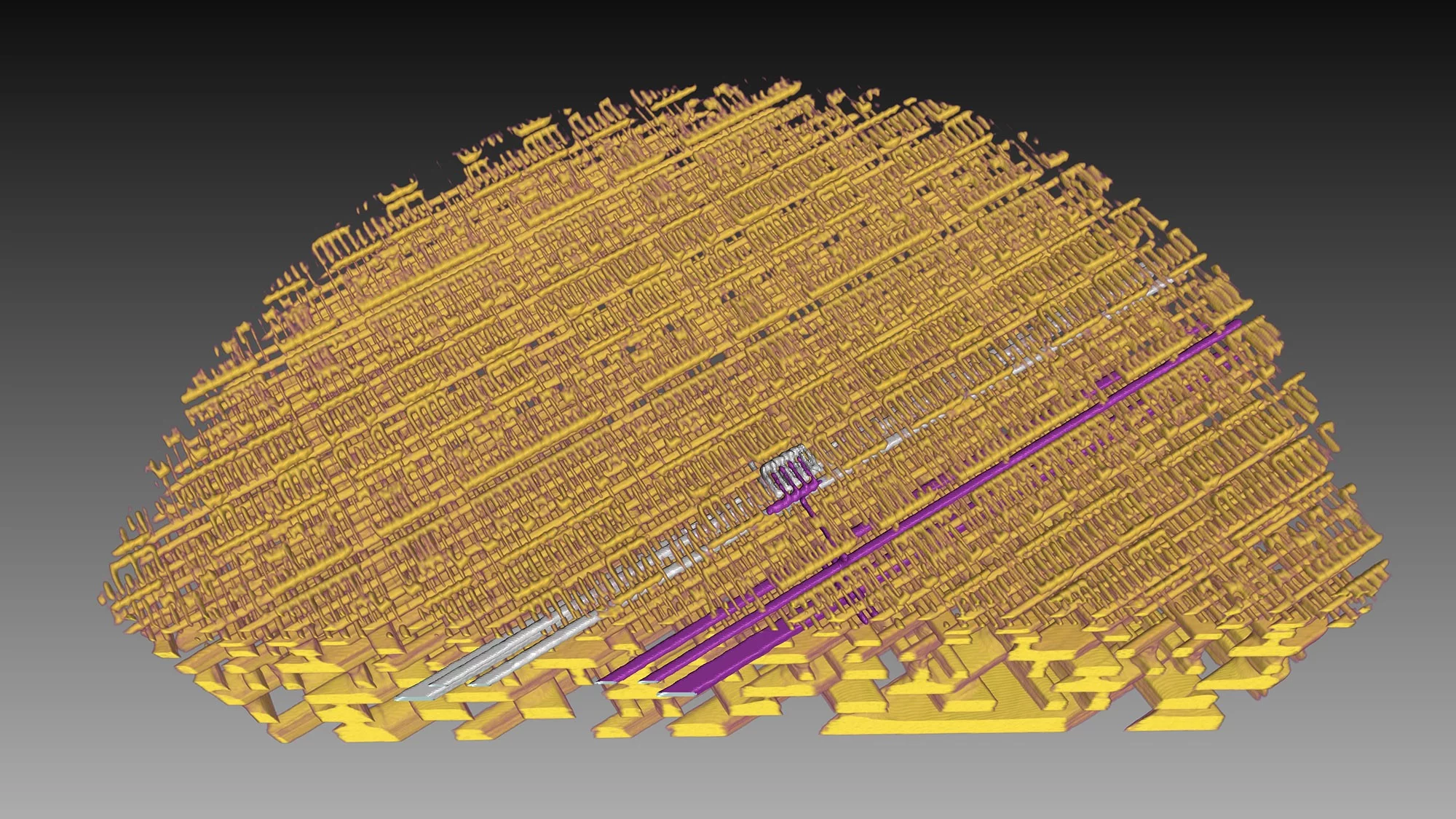
- A PSI spin-off has received this year's Swiss Technology Award: The recently founded company GratXray develops new methods for early detection of breast cancer.
- With a technology developed at PSI, 60 percent more biogas can be produced from biowaste than with conventional processes. A 1,000-hour test at the Werdhölzli biowaste digestion and wastewater treatment plant in Zurich confirmed this. The test was carried out in collaboration with Zurich-based energy provider Energie 360°.
- For the first time, researchers at PSI have made the directions of magnetisation in a three-dimensional magnetic object visible. The smallest details in their visualisation were ten thousand times smaller than a millimetre. In the visualised magnetic structure, one pattern in particular stood out: magnetic singularities called Bloch points, which previously were known only in theory.
- PSI researchers have produced detailed 3-D X-ray images of a commercially available computer chip. For the first time, through a non-destructive technique with no deformation or distortion, processes occurring in internal power lines just 45 nanometres wide (45 millionths of a millimetre) and the 34-nanometre-high transistors were made clearly visible. For manufacturers, it is a major challenge to determine if, in the end, the structure of their chips conforms to the specifications. Thus these results represent an important application of an X-ray tomography technique that the PSI researchers have been developing for several years.
- The Laboratory for Energy Systems Analysis at PSI has studied how Switzerland's energy supply could look under various conditions up to the year 2050. On the basis of their calculations, the laboratory's researchers are able to make statements about future developments and determine, for example, how ambitious goals for CO2 reduction could be achieved at the lowest possible cost.
2016
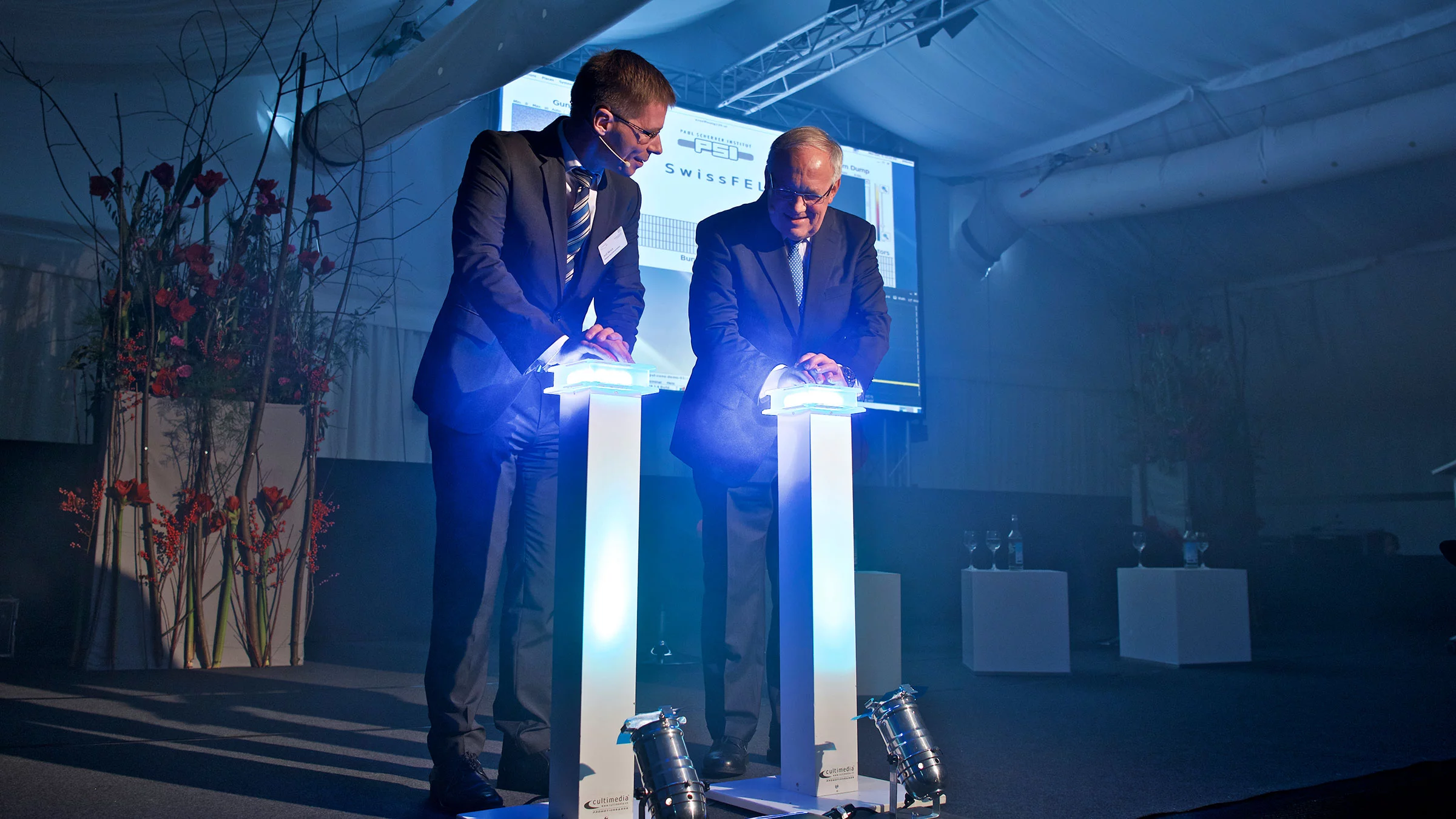
- The new large-scale research facility of PSI, the X-ray free-electron laser SwissFEL, is inaugurated at a celebration attended by the President of the Swiss Confederation Johann N. Schneider-Ammann. The scientific breakthroughs SwissFEL is expected to enable will advance important developments in areas such as energy and environment, information technology, and health.
- Twenty years ago, the first cancer patient worldwide was treated with a new irradiation method: the so-called spot-scanning technique for proton beams. At that time the method, developed by PSI researchers, was a breakthrough in radiation therapy. Today it is the standard technique in proton therapy worldwide. At PSI, more than 1,200 cancer patients have already been routinely treated using this method.
- With the ESI Platform, a facility goes into operation at PSI where researchers can demonstrate how integral storage concepts can best enable a decentralised power supply to function with renewable energy sources.
- The deuteron – one of the simplest atomic nuclei, consisting of just one proton and one neutron – is much smaller than previously thought. This conclusion has been reached by an international research group that carried out experiments on this particle at PSI. The experiments took place here because PSI has the world's most powerful muon source, which was needed to produce muonic deterium in sufficient quantities.
2015
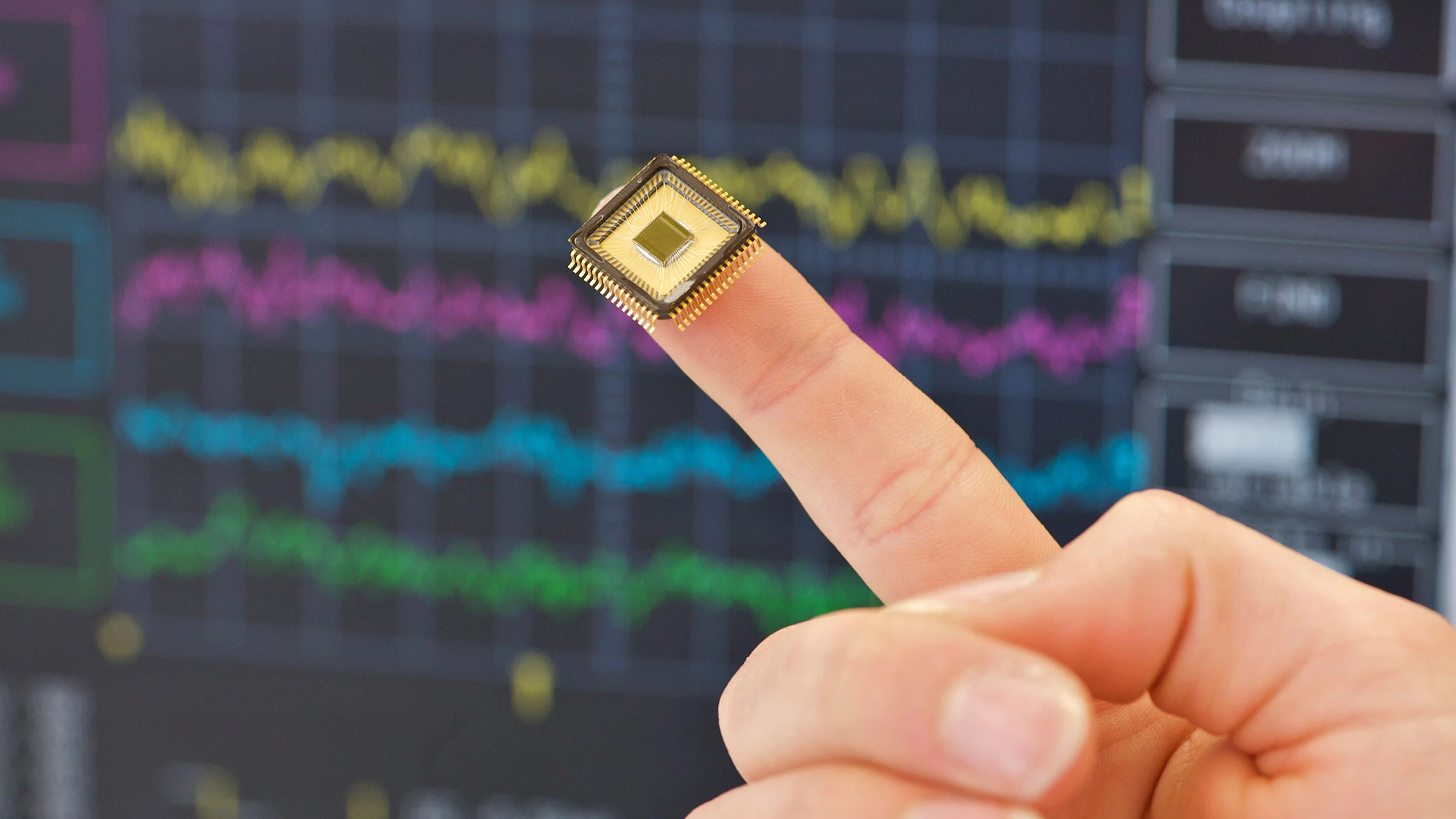
- DRS4 is a high-precision integrated circuit developed at PSI that could decode the physics of our entire universe. Besides that, the chip is already helping doctors pinpoint brain tumours with the utmost accuracy.
- Our universe consists of significantly more matter than theories to date can account for. This circumstance is one of the greatest mysteries of modern science. One way to clarify this discrepancy is via the so-called dipole moment of the neutron. In an international collaboration, researchers at PSI have developed a new method that will help to determine this dipole moment more precisely than ever before.
- In October 2015, PSI opens its doors to everyone. PSI scientists provide insights into many of the Institute's research topics. Ten thousand visitors are fascinated by the "research city" PSI.
- PSI researchers have developed a coating technique that could increase the efficiency of fuel cells. They have applied for a patent on this method, which is suitable for mass production.
- Researchers of the Paul Scherrer Institute have succeeded in producing regular patterns in a semiconductor material that are 16 times smaller than those of today's computer chips. With this they have taken an important step towards still smaller computer components. The industry envisages structures of this size as standard for the year 2028.
- Particulate matter from petrol engines is harmful to our respiratory system – regardless of whether the engines are older or comply with the latest EU standard. The particulates make it easier for pathogens to enter the lungs. This has been proven by researchers from the University of Bern and PSI using a realistic laboratory experiment.
2014
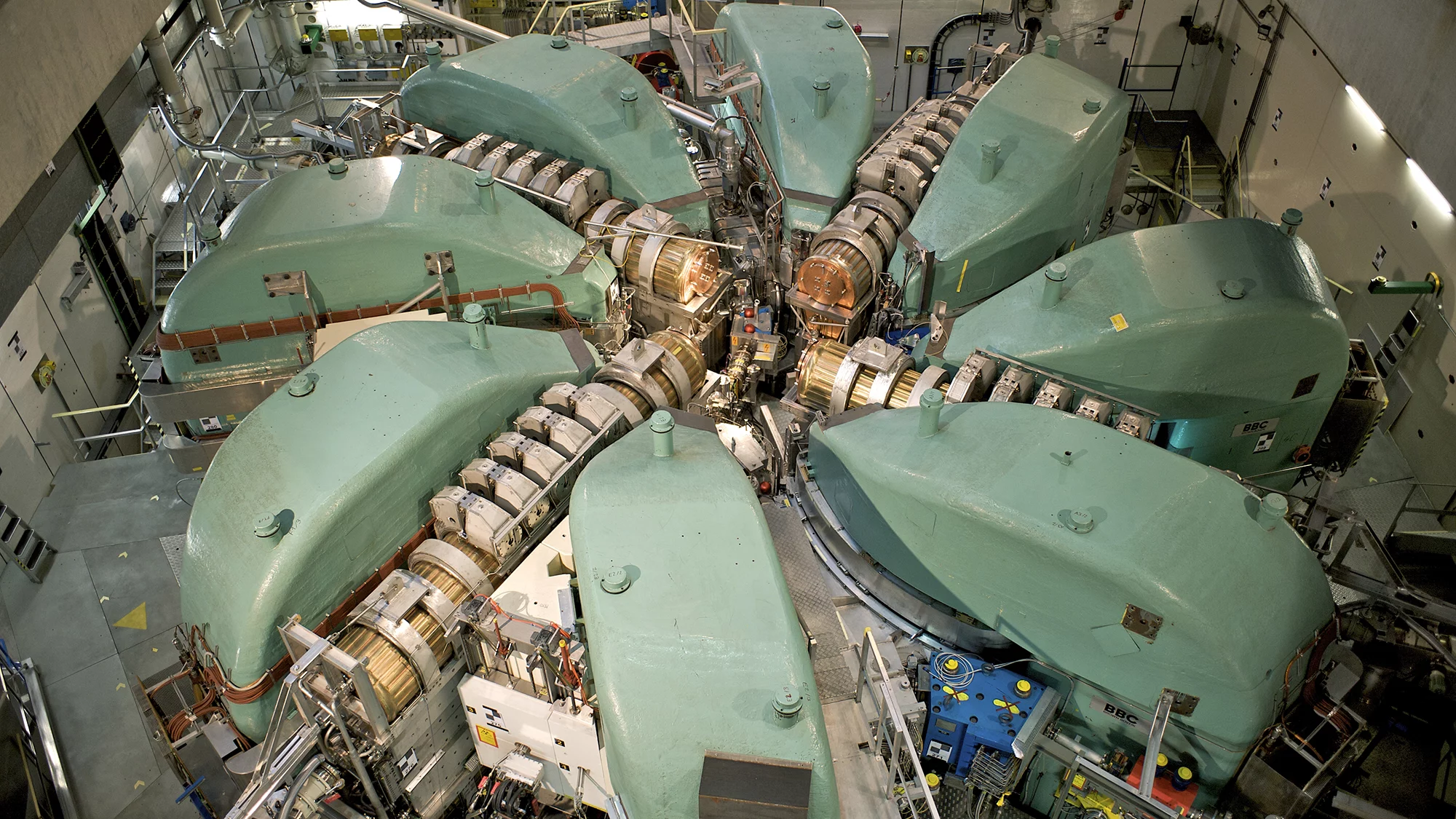
- On winter smog days in Switzerland, burning wood is the main source of carbonaceous particulates that pose a threat to human health: This is shown by a large-scale Swiss study on particulate matter pollution conducted by scientists from PSI, the University of Bern, and ETH Zurich over a five-year period.
- PSI researchers have developed a technique that will open up new dimensions in tomographic imaging, making more detailed representation of biological tissues, for instance, possible in the future. Using a special measurement setup at the Swiss Light Source SLS, they have achieved a resolution of 16 nanometres in a larger sample, thereby setting a world record.
- SBB launches a new minibar model in its intercity trains. On board, there is a fuel cell system co-developed by PSI. It ensures that the minibar, despite space constraints, has enough power to brew cappuccinos and latte macchiato.
- Materials science, particle physics, molecular biology, archaeology – for 40 years, the large proton accelerator has enabled top-level research in diverse fields. The anniversary is celebrated in a symposium.
- In the 30 years since 1984, more than 7,200 patients have had ocular tumours irradiated with protons at PSI. With that, PSI is among the world's most experienced centres in the fight against this rare disease.
2013
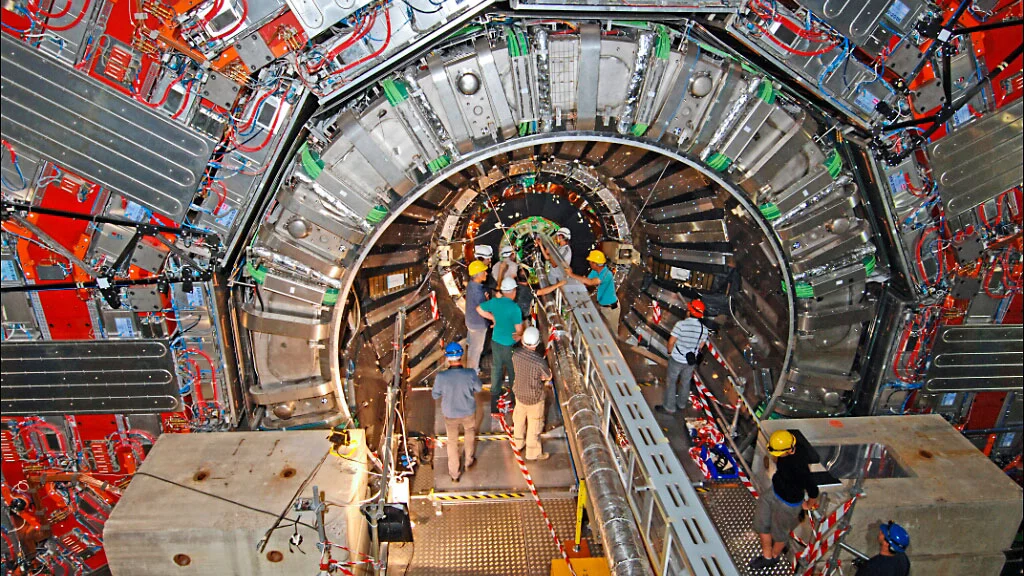
- Foundation of the Institute of Biomass and Resources Efficiency by the two institutions PSI and University of Applied Sciences and Arts Northwestern Switzerland.
- Laying of the foundation stone for the new large research facility SwissFEL.
- An electronics student at the PSI wins the gold medal at WorldSkills Leipzig 2013.
- The Canton of Aargau and the PSI present the concept of PARK innovAARE as a potential network location for the Swiss Innovation Park.
- Researchers from the PSI gain key insights into sodium-ion batteries, the memory effect of lithium-ion batteries and fuel cells based on novel aerogel catalysts.
- Youth day with experiments and lectures for 2,500 children, teenagers and the young at heart.
- The Nobel Prize is awarded for the theoretical prediction of the Higgs particle, which is responsible for the formation of mass. One year earlier, Higgs particles were actually detected for the first time at CERN. The pixel detector that made this possible was largely developed and constructed at the PSI in a 16-year project.
2012
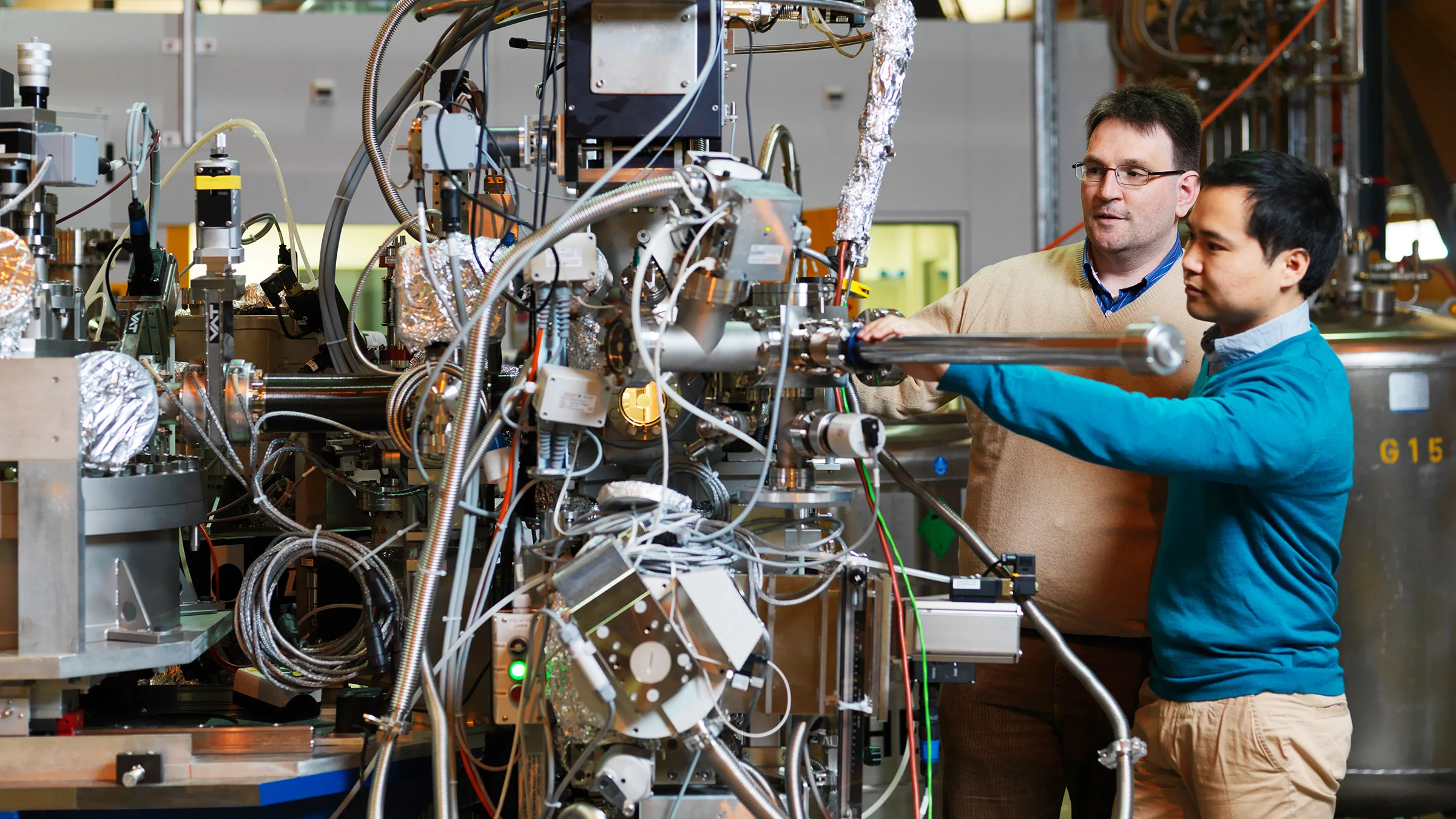
- The PSI teams up with the World Energy Council to develop energy models to calculate global energy systems.
- Collaboration agreement signed with Swiss industry for the high-precision production of accelerator structures for SwissFEL, for which the PSI provides industry with its technological knowhow.
- The PSI invites guests to an energy conference: representatives from politics, industry and research discuss with Federal Councillor Doris Leuthard.
- A technique developed at the PSI for the retention of radioactive iodine aerosols in the event of an accident at a nuclear power station is licensed for further marketing at a Swiss industrial company.
- Physicists from the PSI observe the splitting of an electron in a solid body for the first time. The results should help understand superconductivity better.
- A mammography method developed at the PSI in collaboration with Baden Cantonal Hospital and Philips yields clear added value for the diagnosis of breast cancer.
- The measurements on diesel particle filters carried out at the SINQ with neutron radiography attract a lot of attention in the automobile world.
2011
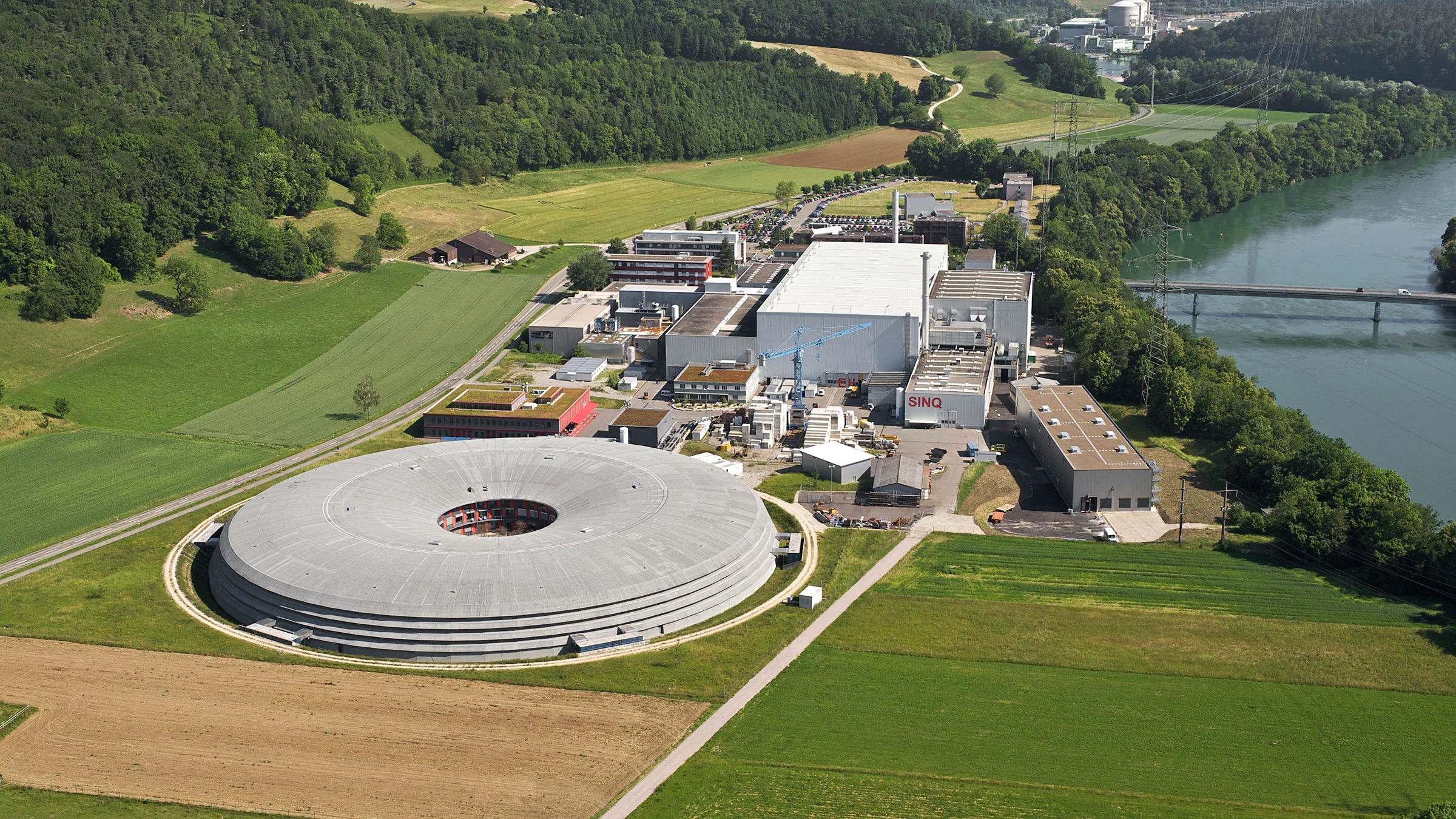
- The PSI demonstrates for the first time that syngas, a precursor in the production of petrol or kerosene, can be produced from water and CO2 with the aid of highly concentrated solar radiation. The PSI researchers were presented with the Golden Idea Award by IDEE-SUISSE®.
- Basic structure of sight decoded. A team of researchers at the PSI succeeds in determining the structure of the key protein rhodopsin in a short-lived, excited state.
- The site for the construction of the SwissFEL facility in Würenlinger Unterwald is approved by the Aargau Government Council and Parliament.
- The SLS turns ten. The research results from this period have yielded over 2,000 scientific publications in the fields of chemistry, physics and biology and been channelled into many industrial applications, especially in the pharmaceutical industry. The SLS started out with 4 beam lines; 10 years on, it has 18.
- The UCN facility produces ultra-cold neutrons for the nEDM experiment for the first time with a view to measuring the neutron's electric dipole moment.
- PSI and Belenos Clean Power AG have developed a fuel cell system that has the potential to be incorporated cost-effectively into a small car. Over the vehicle's lifetime, its cost would be similar to that of a conventional car. For this important step towards environmentally friendly mobility, PSI and Belenos are awarded the Watt d'Or 2011.
- PSI and Belenos Clean Power AG have developed a fuel cell system that has the potential to be incorporated cost-effectively into a small car. Over the vehicle's lifetime, its cost would be similar to that of a conventional car. For this important step towards environmentally friendly mobility, PSI and Belenos are awarded the Watt d'Or 2011.
2010
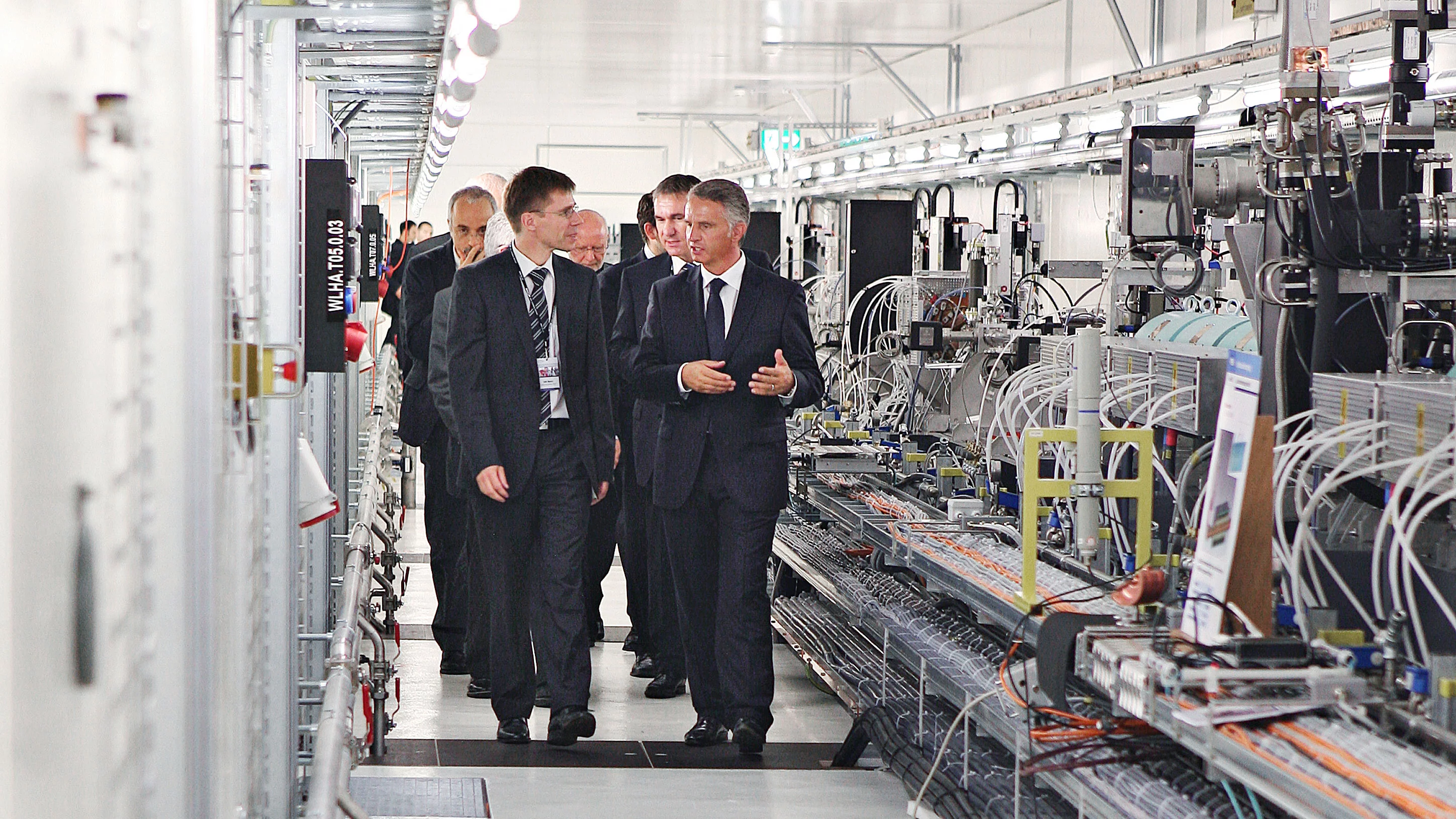
- DECTRIS, a PSI spin-off in the field of x-ray pixel detectors, receives the 2010 Swiss Economic Award for Start-Up Companies.
- Experiments at the PSI reveal that the radius of a proton is smaller than previously believed, which could affect our understanding of the origins of the universe. The results rank among the top ten findings of the year.
- The entire Federal Council visits the PSI.
- Inauguration of the 250 MeV electron accelerator test facility for the SwissFEL in the presence of Federal Councillor Didier Burkhalter and Swissmem President Johann Schneider-Ammann.
- 25 years of treating eye tumours with proton beams and the inauguration of the new radiotherapy ward OPTIS 2. Over 5,500 patients with eye tumours have been treated successfully with proton therapy at the PSI thus far.
2009
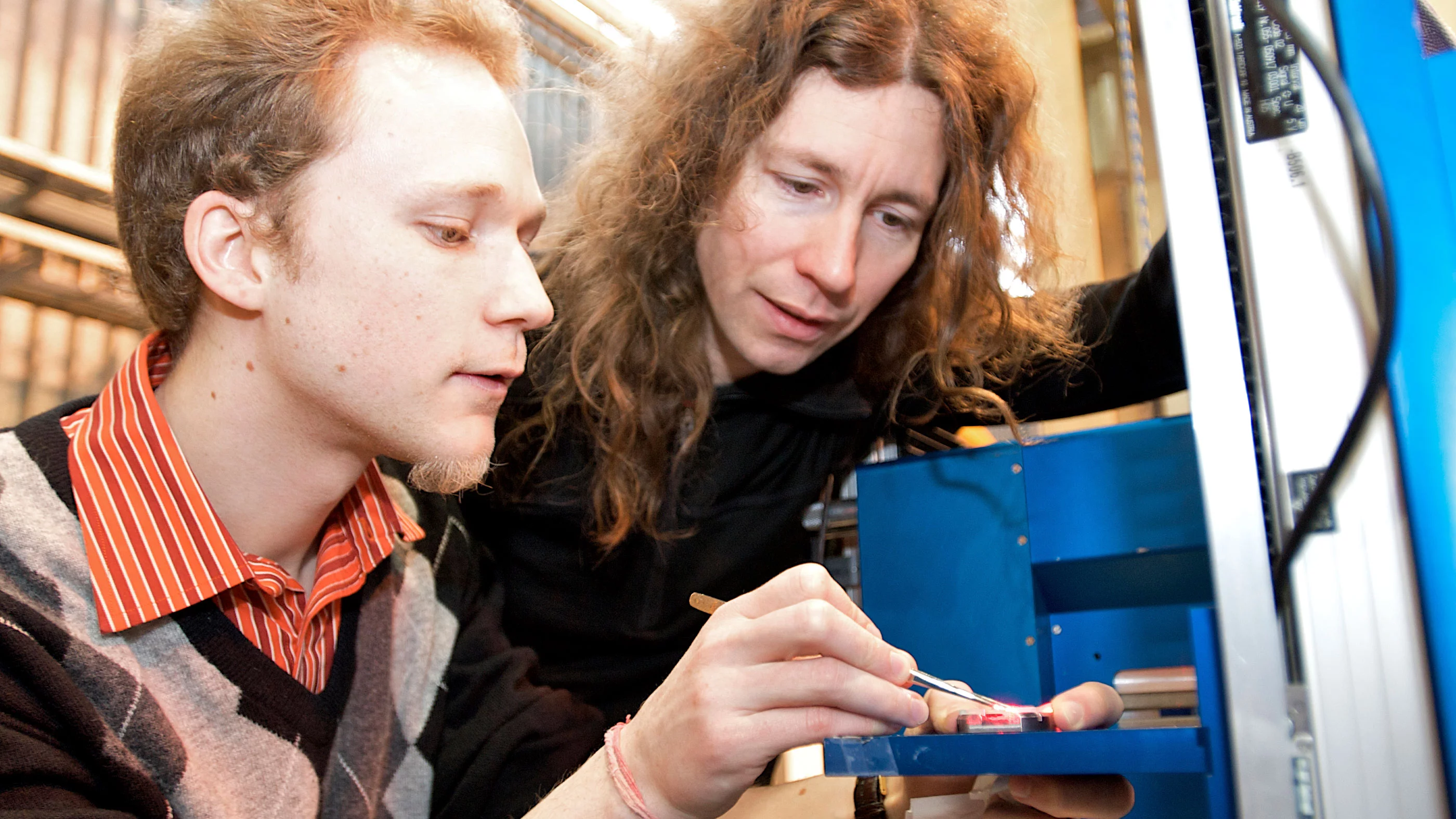
- A new procedure for the production of synthetic natural gas from wood is tested successfully, earning the research team from the PSI the Watt d'Or in 2009.
- Experiments conducted at the PSI's large research facilities shed new light on superconductors and their properties.
- Venkatraman Ramakrishnan is a long-standing user of the SLS at the PSI, regularly conducting experiments here to determine the structures of ribosomes. The same year, he is awarded the Nobel Prize for Chemistry for these structural determinations.
- The first PSI Thesis Medal is awarded to an outstanding doctoral thesis by a user of the large PSI research facilities. From now on, the prize is to be awarded every two years when the PSI user community convenes at the institute.
- The laboratory for neutron scattering celebrates its 25th birthday.
2008
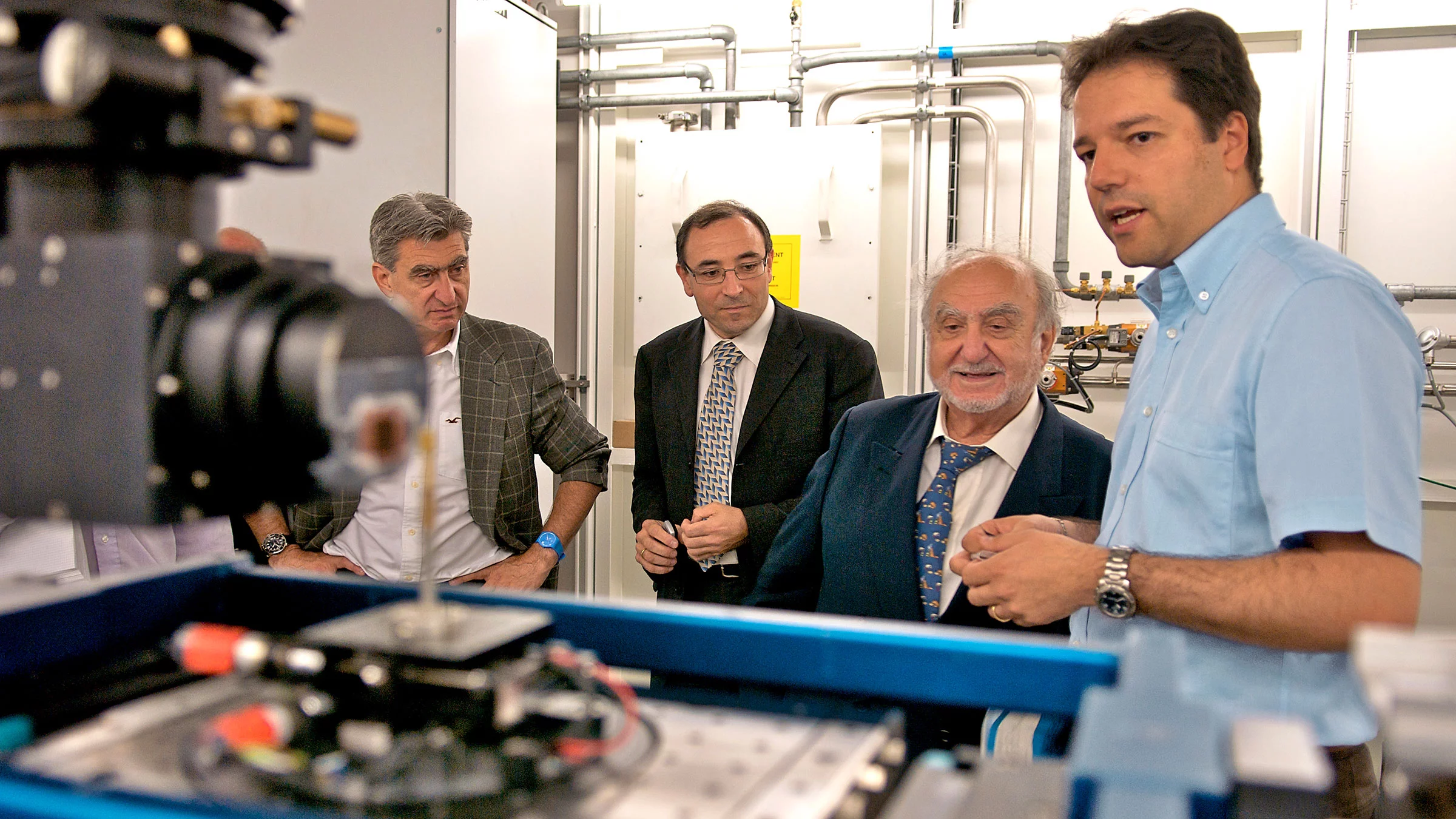
- “20 Years PSI” celebrated with numerous events for the public, including a two-day open day where around 12,000 visitors experienced the institute's research at first hand.
- Launch of the PSI-XFEL (now SwissFEL) project with the construction of a 70-meter experimentation hall for the installation of the 250 MeV electron accelerator test facility.
- Inauguration of the iLab lab school with the goal of inspiring young people to take up a career in a scientific environment.
- Beginning of the collaboration between the PSI and Swatch/Belenos AG to develop fuel cell drives for automobiles.
- Joël Mesot becomes the new director of the PSI on 1 August 1 2008, setting the increased networking between the PSI and Swiss universities, closer collaboration with industry, the preservation of the international competitive ability of the existing large research facilities and the realisation of the future project SwissFEL as priorities.
- “20 Years PSI” ceremony in the presence of President of the Federal Council Pascal Couchepin and over 200 invited guests.
2007
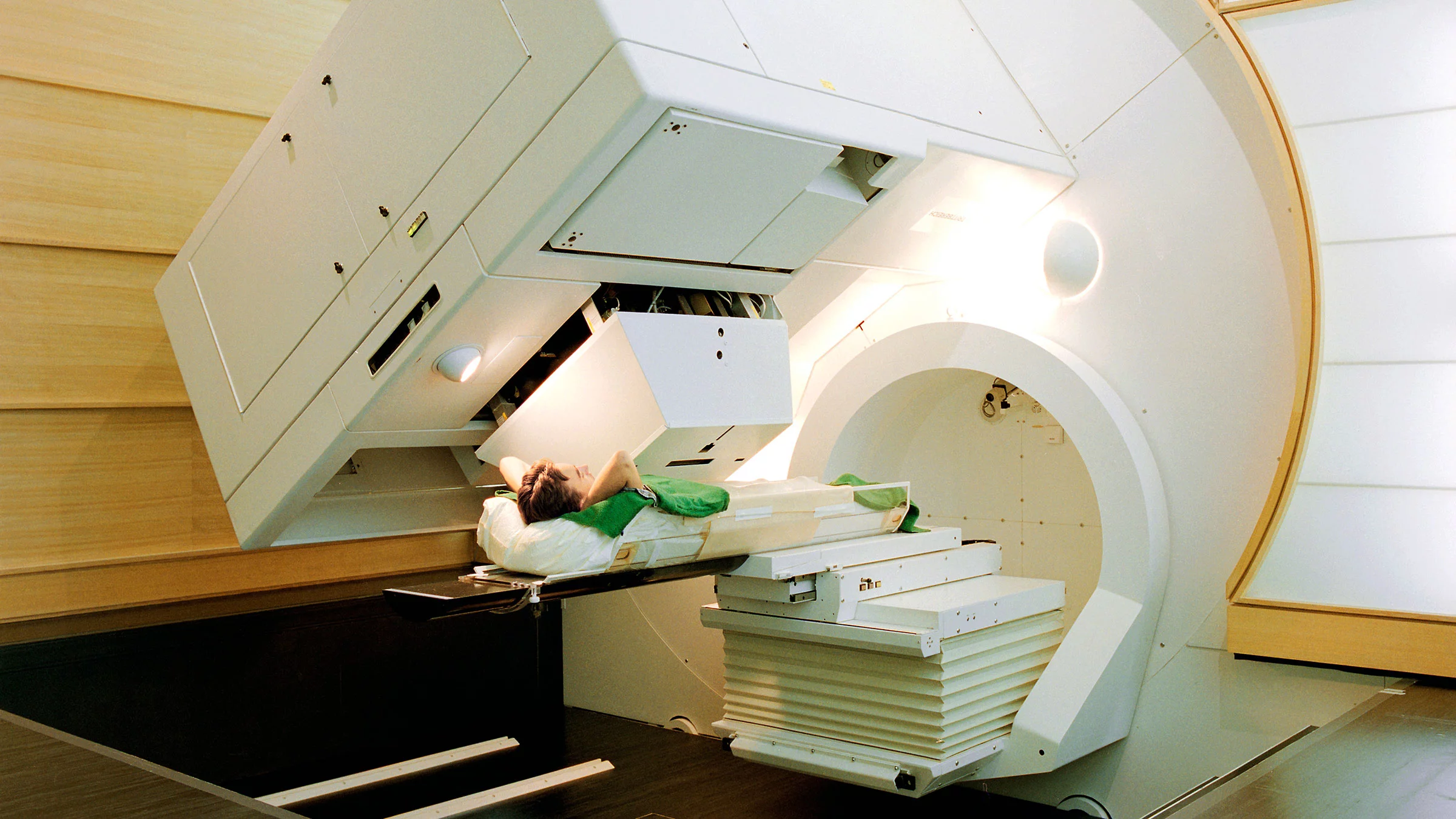
- PSI Director Ralph Eichler moved over to become President of ETH Zurich; ETH physicist Martin Jermann was appointed Interim Director.
- 10th anniversary of SINQ was celebrated with a colloquium and a Neutron Day for the general public. The proton beam at the ring accelerator was upgraded to a new record level of 2.16mA (1.3MW).
- Patient irradiation began at the COMET superconducting cyclotron, and a changeover was made to year-round proton therapy operation, and the successful irradiation, under anaesthetic, of 15 infants suffering from cancer took place.
2006
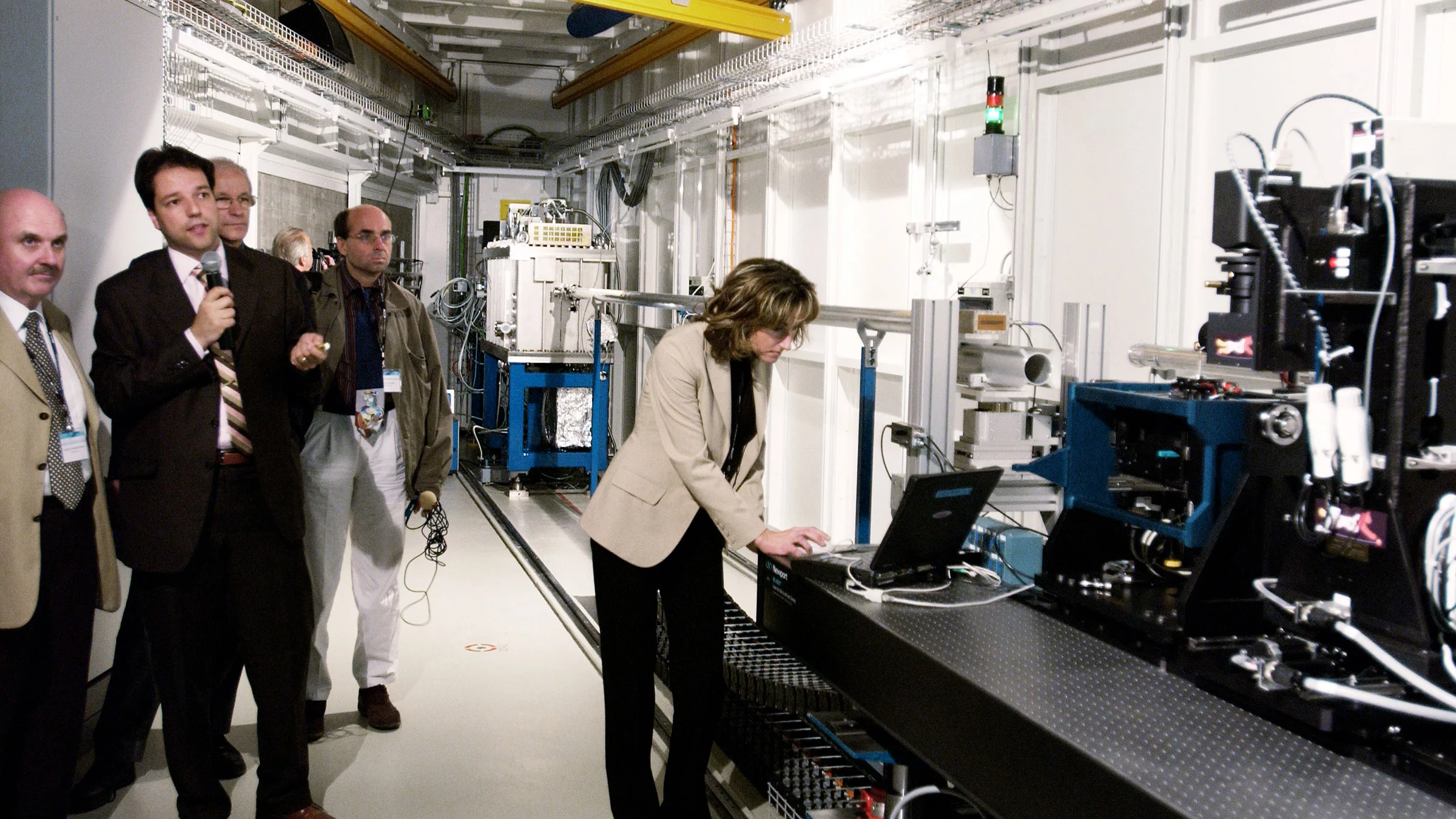
- Technically, it is possible to solve the problem of the disposal of nuclear waste by permanent geological storage. However, it would be more elegant to convert long-lived radioactive atomic nuclei into radioactive atomic nuclei with a short half-life. The development of the MEGAPIE liquid metal neutron spallation target at PSI offered a possible concept for doubling the output of the SINQ neutron source as well as the conversion of long-lived nuclear waste using this tool.
- Thanks to this doubling of output, the neutron source became even more attractive to researchers. New research instruments were incorporated to cater for additional experiments.
- The ETH Board transferred the leadership of the Swiss Competence Center for Energy and Mobility (CCEM) to PSI, and the Canton of Aargau granted a loan of 10 million CHF to the Center.
- The TOMCAT (with EPF Lausanne) and POLLUX (with the University of Erlangen-Nuremberg) beamlines were commissioned for SLS users.
- The femtosecond undulator source at the SLS began operation, enabling short-exposure images of lattice vibrations in crystals to be taken with a very high resolution.
- World-wide recognition was achieved for new results in superconductivity research (achieved with low-energy muons) and in molecular biology (control of vascular tissue-forming cells).
- Development of the large components for Gantry 2 (proton therapy equipment for the irradiation of tumours which move following respiration, e.g. lung and breast carcinoma); the Canton of Aargau gave a grant of 1 million CHF for proton therapy.
2005

Around the World in 80 Million Years
- The PSI/ETHZ pilot plant at the 300kW scale, to generate solar high-temperature process heat, was commissioned in Israel.
- The decision was taken to build a 1MW pilot plant to obtain
methane from wood
. - Development of the promising Phase-Contrast microscopy facility.
- PSI organised the European Research Centres' Winter Olympics at Disentis-Sedrun.
- Swiss Technology Award received for the selective catalytic exhaust gas treatment system (the SCR System).
- The premiere at the PSI Forum of the award-winning 3-D film
Around the World in 80 Million Years
, describing the carbon cycle. - PSI offered tours to interested groups showing the impact of Einstein's research at PSI. More than 9,000 people visited PSI on its
Day of Physics
Open Day – a new record.
2004

- The COMET superconducting compact medical cyclotron arrived. For the first time in Europe, infants suffering from cancer could benefit from proton therapy (under anaesthetic) and gain a significantly improved chance of survival.
- The lightweight HY-LIGHT fuel cell car (2-litre petrol-equivalent /100km) produced jointly by PSI and Michelin underwent successful demonstration testing in Shanghai.
- Celebrations were held for the 30-year anniversary of the ring accelerator. The machine still continues to be at the forefront of technology internationally.
- Thanks to genome information, researchers at the SLS were able to study protein structures that may be connected to various diseases, which might at some stage lead to tailor-made medication. The demand for these investigations is extremely high and the SLS is therefore being continuously expanded and developed.
2003
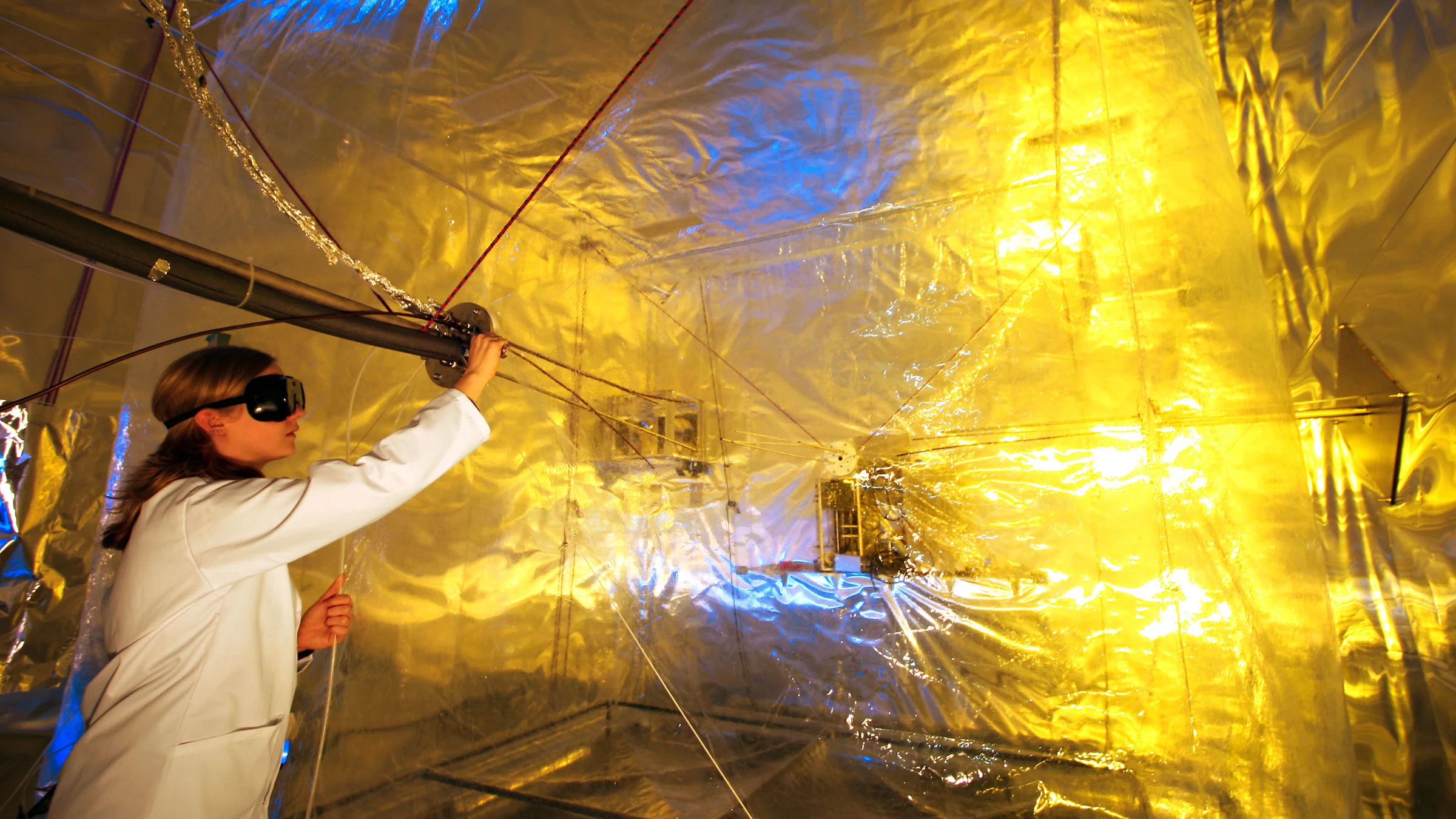
- The Paul Scherrer Institute is very well integrated in the international science scene, and is globally welcomed as a partner. PSI led the development of giant detectors for current physics experiments at the CERN European Research Laboratory in Geneva.
- Preliminary work started on the SwissFEL, the new large research facility, an X-ray laser which uses extremely short pulses of radiation.
- Megamolecules from sunlight. Results from the new smog chamber caused a stir and established this test device as a research facility that was highly regarded internationally. This propelled PSI's aerosol research (including its studies on the Jungfraujoch) into the limelight.
- The XIL (X-ray Interference Lithography) beam line was commissioned at the SLS, with which high-precision nanostructures could be created (a world record!).
- Open Day: A glimpse into the world of the future for 6,000 people with a thirst for knowledge.
- For the first time, more than 1500 external scientists used the large research facilities at PSI during the course of the year.
2002
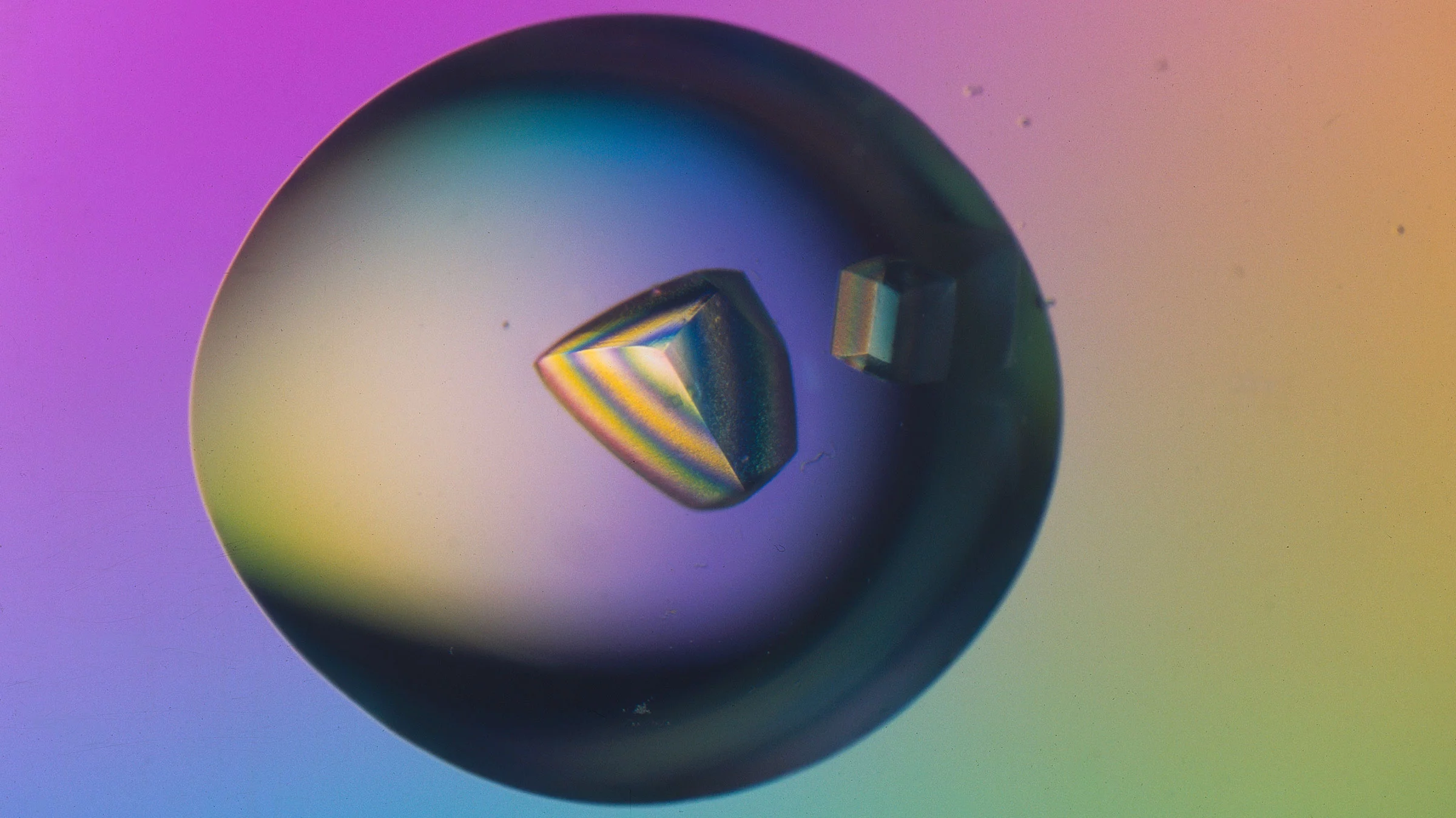
- Ralph Eichler became the new Director. The vision of this ETH professor and experimental particle physicist was to build a free-electron laser to investigate tiny structures in an extremely short time.
- The NASA satellite HESSI was launched, carrying an X-ray telescope from PSI on board, to observe high-energy solar activity.
- A second SLS beamline for protein crystallography was inaugurated and taken into service (with participation from Novartis, Roche and the Max-Planck Society).
- Open Day: Surfaces – familiar and unfamiliar interfaces, with 5,500 visitors.
2001
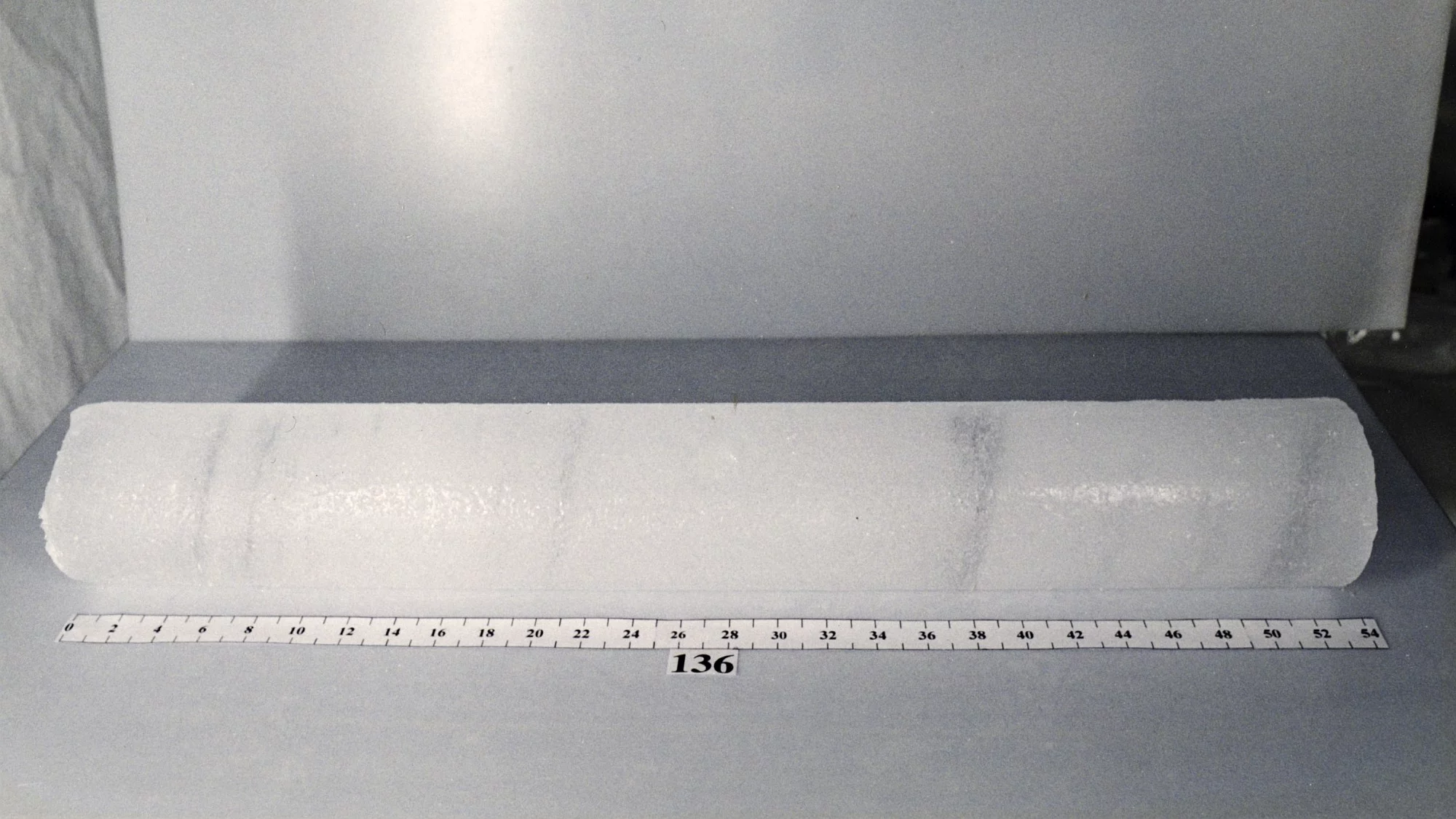
- Inauguration of the SLS on 19th October, in the presence of Federal Councillor Ruth Dreifuss.
- Specification and procurement of a compact superconducting cyclotron (COMET) for proton therapy.
- Initial test runs of the VW Bora HY.Power car, equipped with fuel cells and supercapacitors for braking-energy regeneration; this vehicle travelled over the Simplon Pass in January 2002.
- Expedition by a research team into the Altai Mountains in Siberia; analysis of glacial ice revealed a marked increase in temperature in this region over the past 150 years.
2000
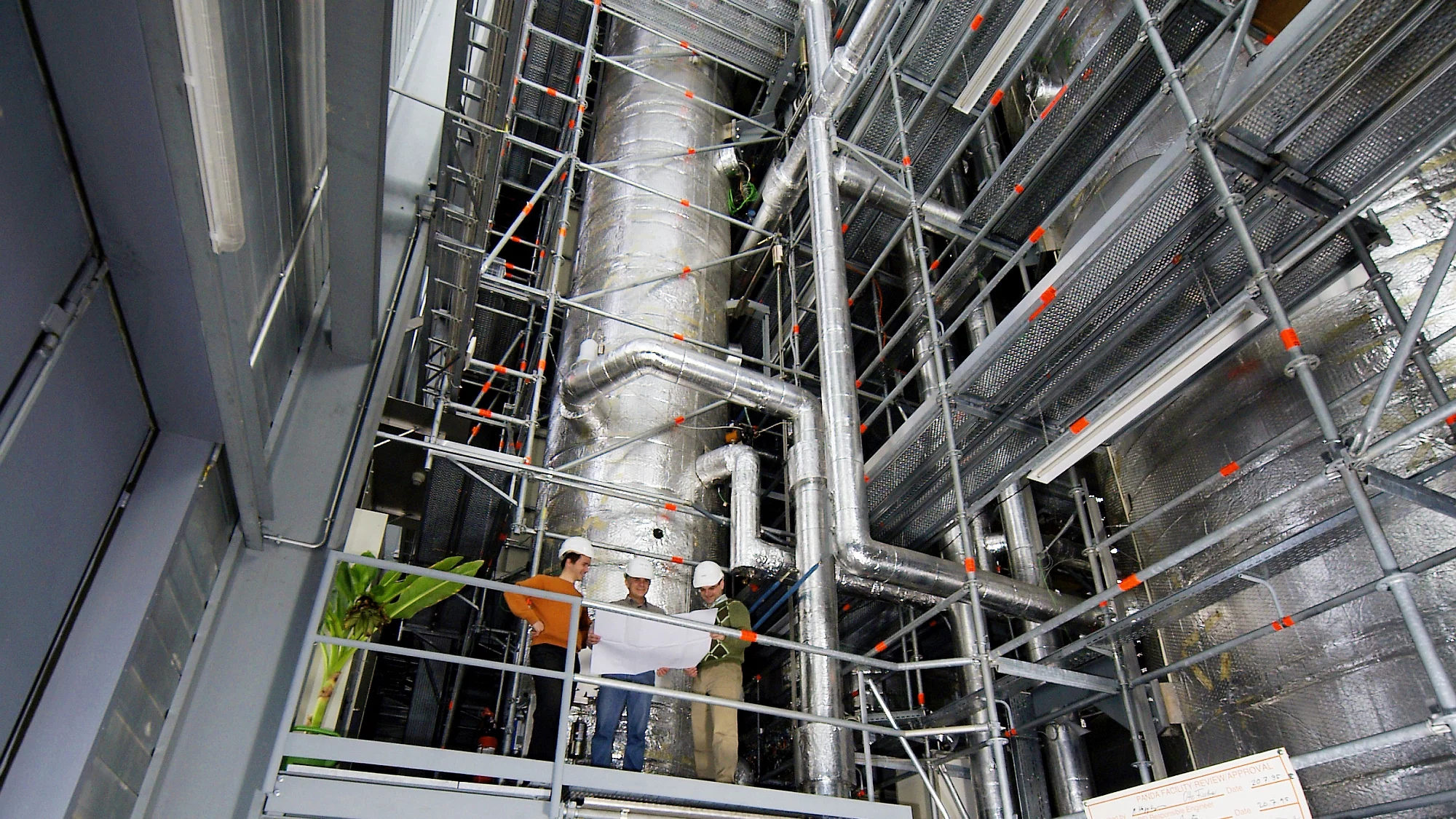
- Nuclear energy continues to be an option in Switzerland. At PSI, nuclear energy research concentrates on safety aspects: on reactor concepts with even more inherent safety; on the behaviour of materials in nuclear reactors; and on the safe disposal of radioactive waste.
- Synchrotron light was generated at the SLS for the first time.
- The PROSCAN project started (the development of proton therapy); charities and private donors supported the project to the tune of over 8 million CHF in subsequent years, while the Canton of Aargau provided in addition a loan of 5 million CHF.
- Development started on new catalytic processes to convert biomass into synthetic natural gas.
- Start-up of low-energy muon beam production, enabling magnetic domains in non-magnetic metals to be seen for the first time.
1999
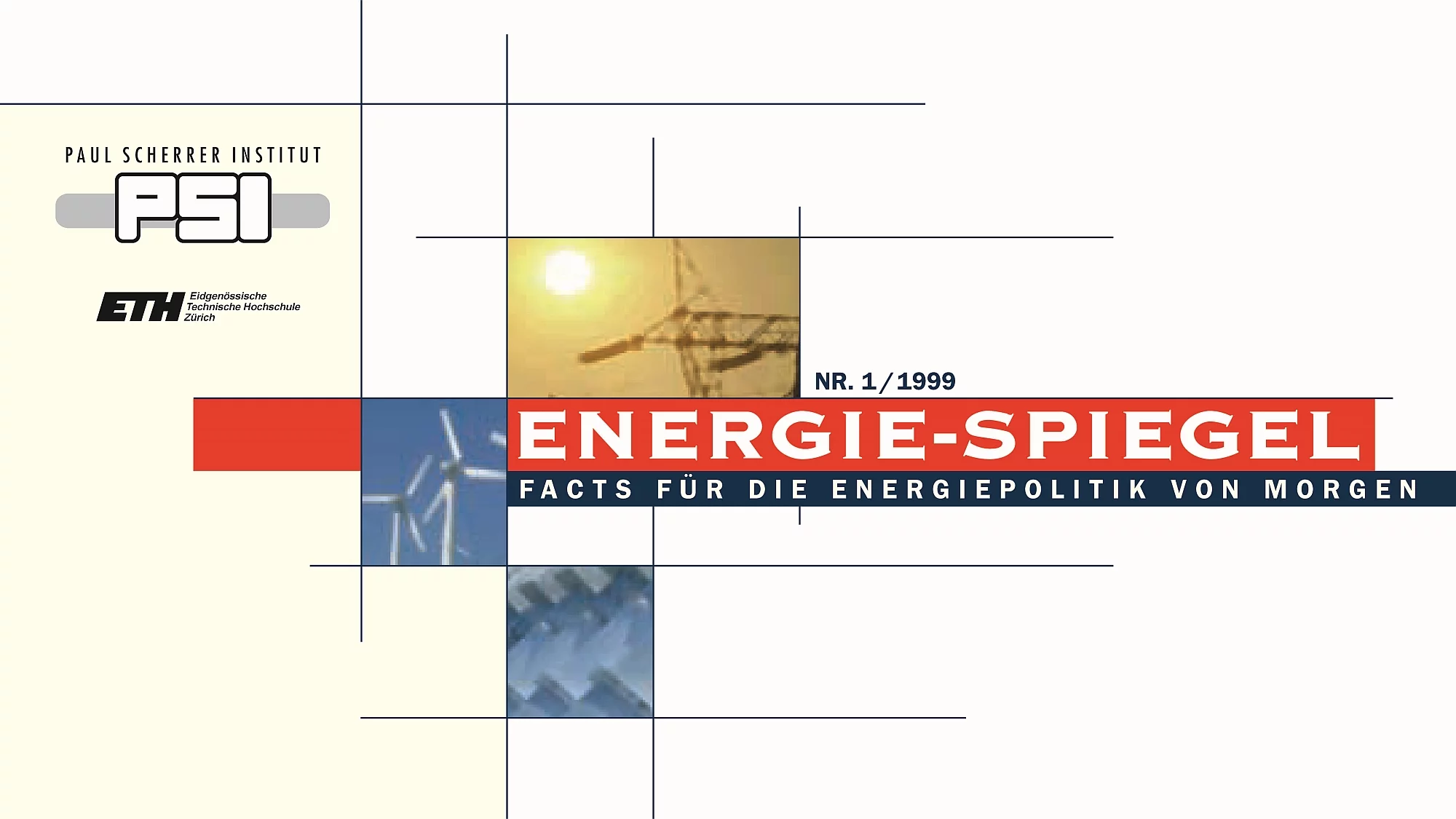
- An increase in beam current at the ring accelerator made SINQ the only source anywhere in the world with a spallation target in the MW range.
- The radiochemical element Bohrium was examined for the very first time, with only six atoms available.
- The
Energie-Spiegel
was launched, which was to become one of the most highly regarded publications in the Swiss energy sector in subsequent years. - The 20,000th visitor was recorded at the PSI Forum.
- Knowledge and skill are important prerequisites for the success of the whole economy, as well as for each individual person. Switzerland depends on well-trained specialists and, as its contribution to this, PSI annually trains 240 postgraduate students and 80 apprentices. It ran a number of special training courses and supported the teaching activities of its specialist staff.
- An Open Day was organised, to keep the general public informed. More than 6,000 people visited the facilities, viewed the laboratories and received explanations from PSI specialists about their own areas of research.
1998
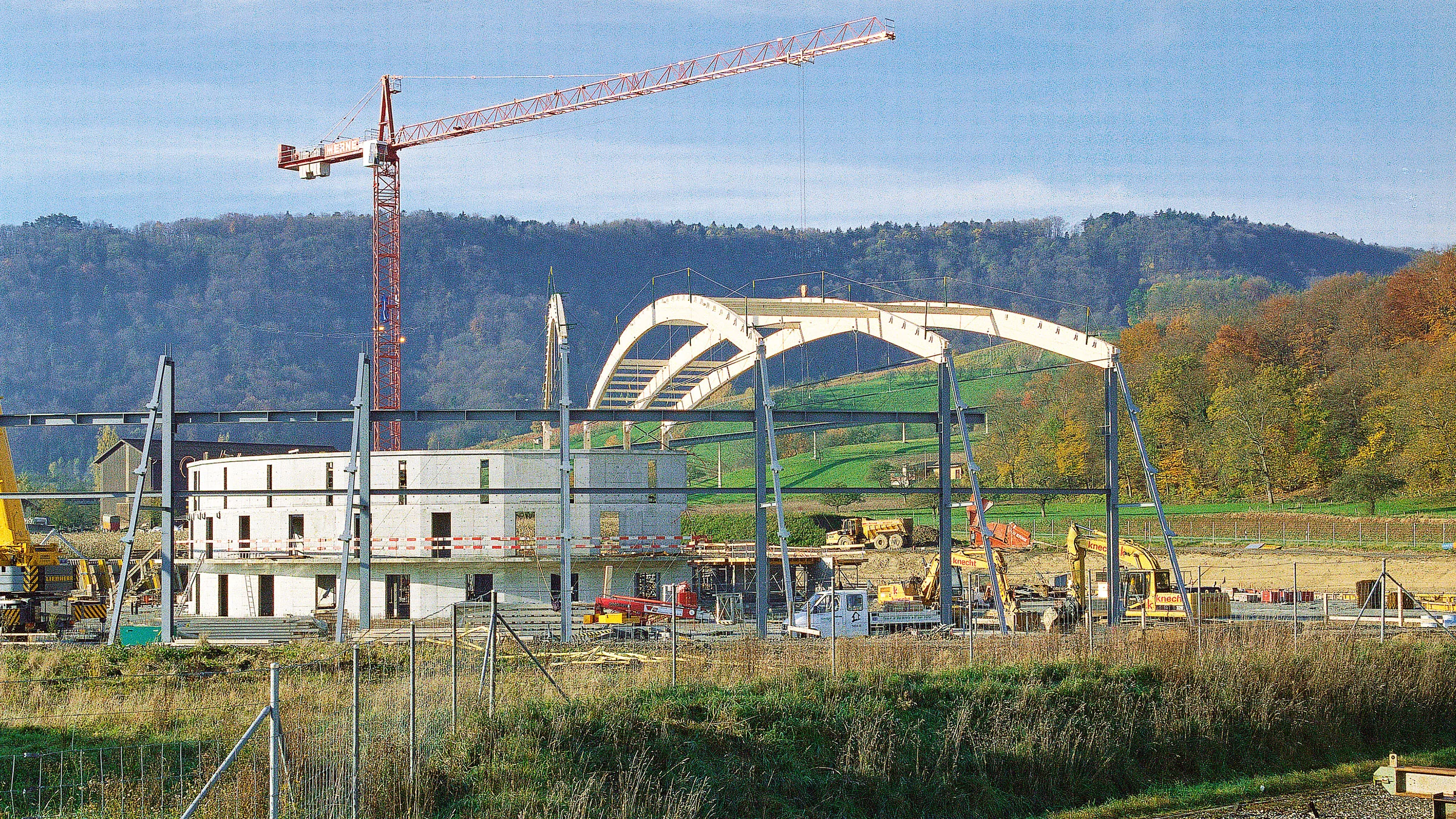
The Swiss Light Source taking shape.
- Building work started on the SLS. The construction of the innovative large facility Swiss Light Source SLS made PSI even more recognisable from the air than before. The SLS cost 180 million CHF and can be used as a kind of giant microscope, allowing researchers to penetrate hitherto inaccessible depths of the microcosmos. It could, for example, be used to develop pharmaceutical products or new materials.
- New discoveries about the magnetic properties of materials were made at SINQ, and the results used in the development of magnetic storage media in the information technology field.
- A 1kW fuel-cell stack achieved a service life of 10,000 hours, while supercapacitors achieved 100,000 charging and discharging cycles, thus satisfing the basic requirements for application in a road-going vehicle.
- New discoveries were made on the vertical transport of ozone in Alpine valleys; high Alpine regions are significantly more badly affected by the increase in trans-Alpine traffic than had previously been thought.
- PSI celebrates its 10th anniversary by opening the PSI Forum visitor centre in order to promote the dialogue between science and society. The instructive, interactive exhibition of the areas covered by PSI's research activities was mainly aimed at the younger generation. The 3-D film
A Journey to the Centre of Matter
became a particular attraction.
1997

- Both chambers of the Swiss Federal Parliament approved the construction of the Swiss Light Source (SLS).
- New discoveries relating to magnetic fluids were made with the help of neutron scattering at the SINQ facility.
- A high-power solar furnace was commisioned which would be used to study high temperature processes for the chemical storage of solar energy.
- Transfer of PSI's external branch in Zurich to the Swiss Center for Electronics and Microtechnology (CSEM) in Neuchâtel.
- Notable Swiss companies set up SLSTechno-Trans AG to exploit the future innovations resulting from research at SLS.
1996

The SINQ spallation neutron source
SINQ.
- Leadership is increasingly required in the world of research as much as it is in the industrial world. The unique SINQ large research facility was formally inaugurated at PSI. This was the most powerful neutron source anywhere in the world, allowing scientists to undertake previously impossible experiments.
- The nanotechnology laboratory was commissioned, enabling the first structures for the development of bio-sensors to be generated.
- Highly efficient solar cells were developed, with a performance coefficient of 21.1 %.
- The Swiss Federal Council passed a resolution to implement a new large research facility at PSI, the Swiss Light Source SLS, and passed their dispatch on to Parliament.
- The first cancer patient was treated with proton radiation using the spot-scanning technique (at the PSI gantry) – again, the only one of its kind in the world.
- A new clean-room complex was commissioned. In subsequent years, this complex became the venue for developments such as new types of highly-efficient solar cells.
1995
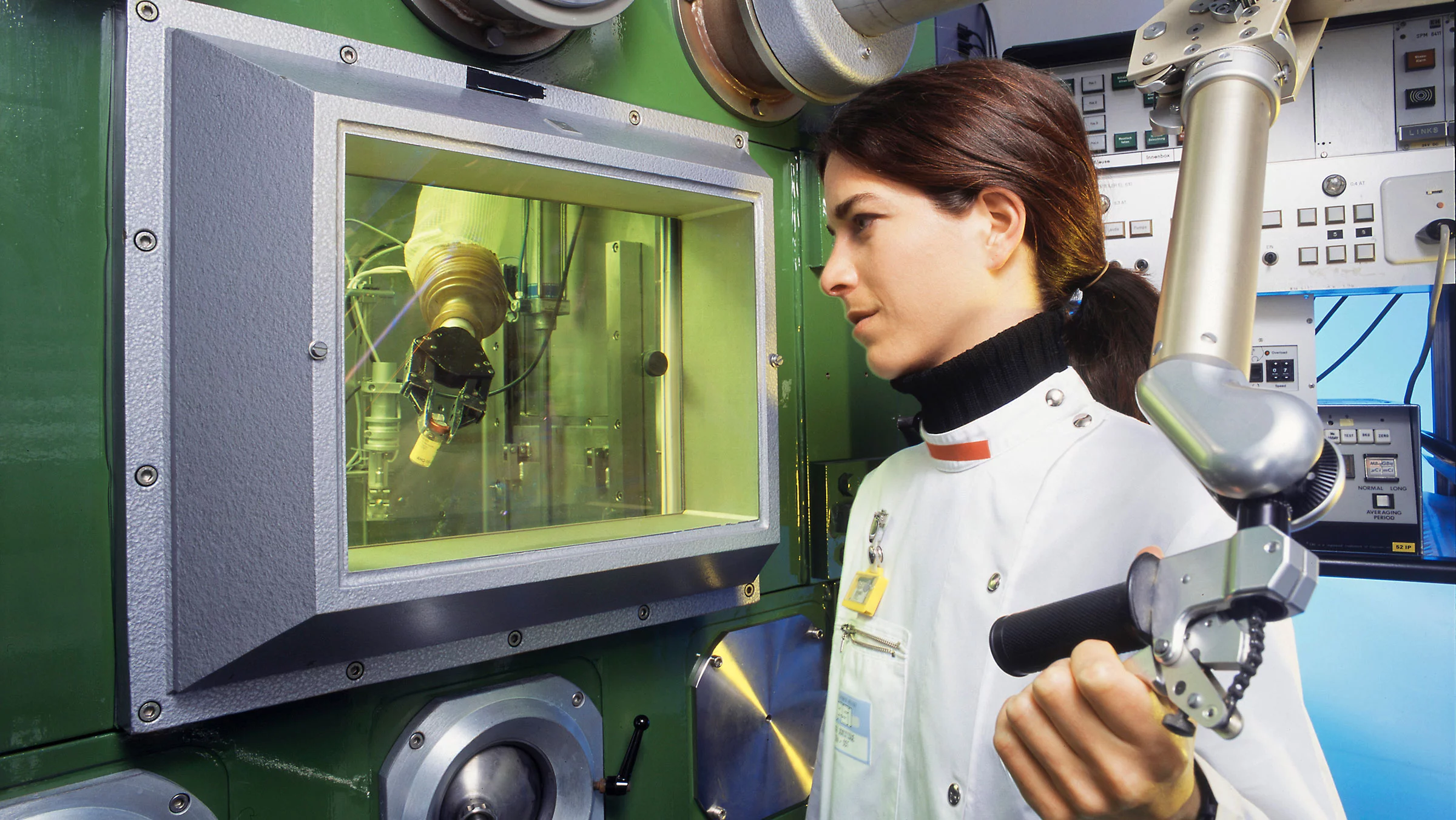
- The PSI proton accelerator had previously been used for particle physics studies. Today, the main emphasis is on applications for solid-state physics, radiopharmacy and cancer treatment. With this in mind, PSI successfully upgraded the accelerator to an extremely high level of performance.
- Alongside surgery, radiation is the most important method of treating cancer. PSI developed a method of effectively destroying deep-seated tumours with protons. Radiopharmaceutical products that could track down and eliminate cancer cells were also developed.
- The chemical properties of Element 106 (Seaborgium, Sg) were determined for the first time.
- Important discoveries about CO2 balances in energy systems; this marked PSI out as a centre of competence for energy system analysis.
1994
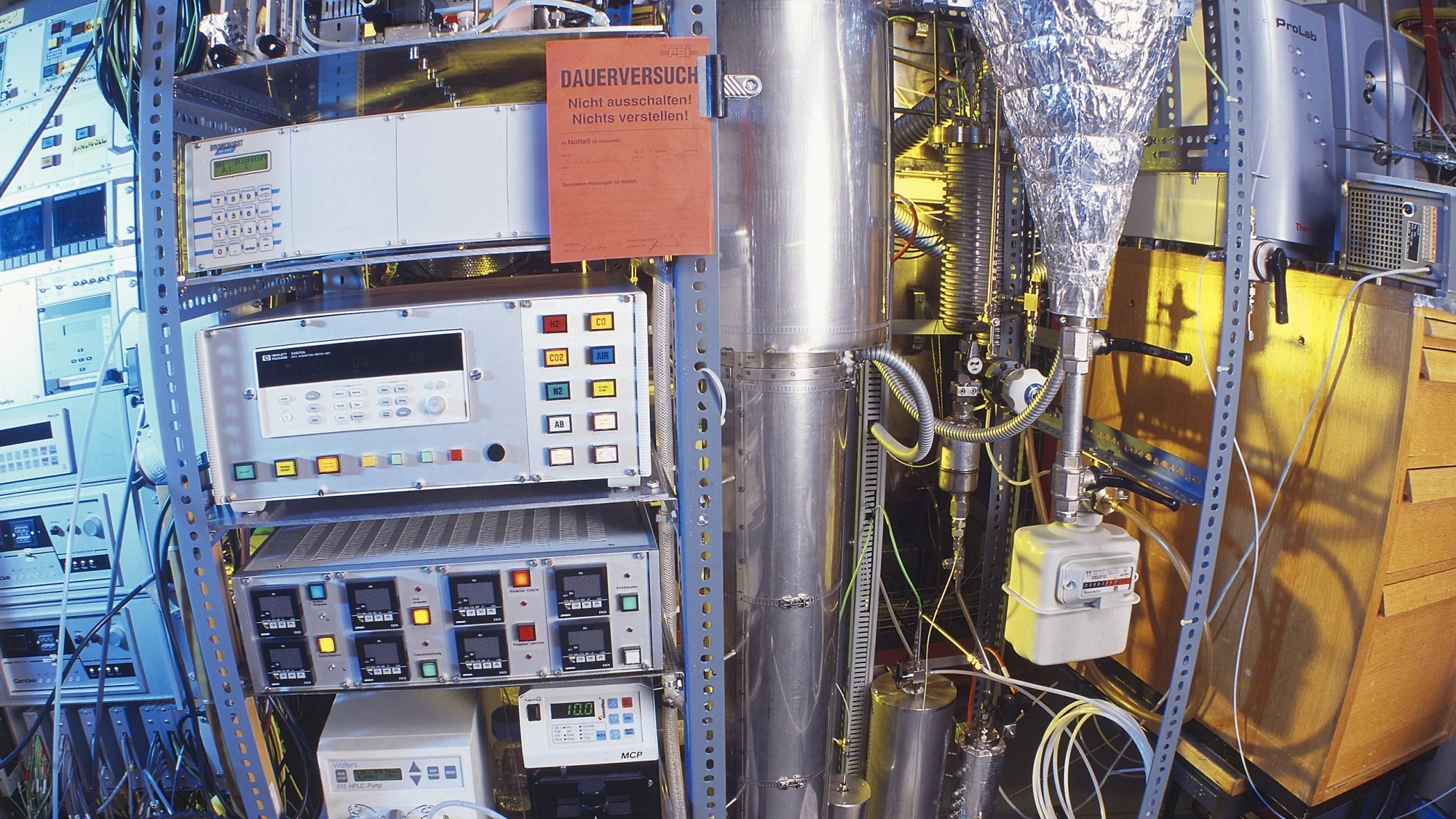
- Our globalised society demands increasing mobility. For sustainable development, low-emission transport systems are vital, and PSI is part of the necessary research effort. PSI ran Energy Days, at which the two-kilowatt per person vision was introduced for the first time. New laboratories and research halls for energy research were inaugurated.
- The aim of the PSI solar hydrogen project was to store solar energy. This valuable energy could then be used even when the sun was not shining.
- The SAPHIR research reactor was closed down.
- First summer school for neutron scattering was held in Zuoz. Since then, this has become an internationally-recognised point of contact between distinguished experts and young scientists.
- Based on scientific discoveries, CO2 emissions were announced to be a problem requiring an urgent solution.
- PSI X-ray and proton detectors were installed on satellites belonging to ESA and the Russian MIR station, providing the first highly accurate measurements of the changes in the radiation belts in the region of space close to the Earth caused by changes in solar activity.
- New discoveries on the long-term stability of cement structures in marly ground water, which is important for the assessment of the radionuclide retention potential in permanent storage sites for radioactive waste.
1993
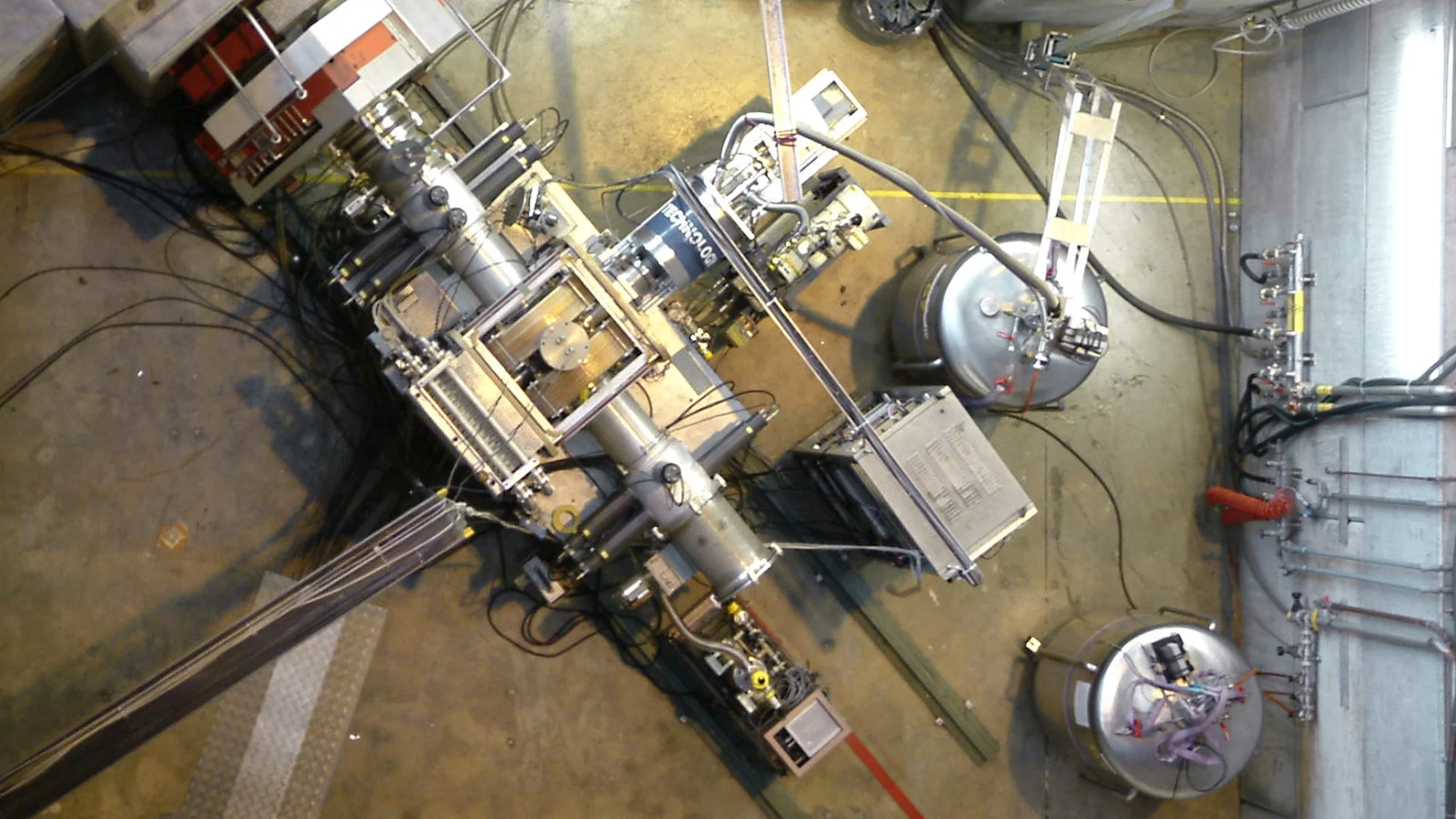
- PSI opens its large research facilities to users from all over the world. The only determining factor is the quality of the research project. 50 percent of the users come from abroad, mostly from the EU.
- The management of the fusion research activities at PSI was transferred to EPFL Lausanne.
- The routine production of radioisotopes was transferred to industry and a new radiochemistry competence centre formed along with the University of Bern.
- New fundamental physics discoveries were made regarding the polarisation of low-energy muons; muons then became attractive for use as probes for research into material surfaces and interfaces.
- The pion therapy facility closed, after treating more than 500 tumour patients. The lessons learned, together with other new discoveries, made it possible to develop the PSI Spot-scanning radiation technique, which was unique in the world.
- The new ETH law came into force and PSI became an autonomous research institution within the ETH domain.
- First successes in the development of tumour-specific radiotherapy agents to combat micro-tumours.
- New insight gained by use of the neutron scattering method into the origin of high-temperature superconductivity.
1992
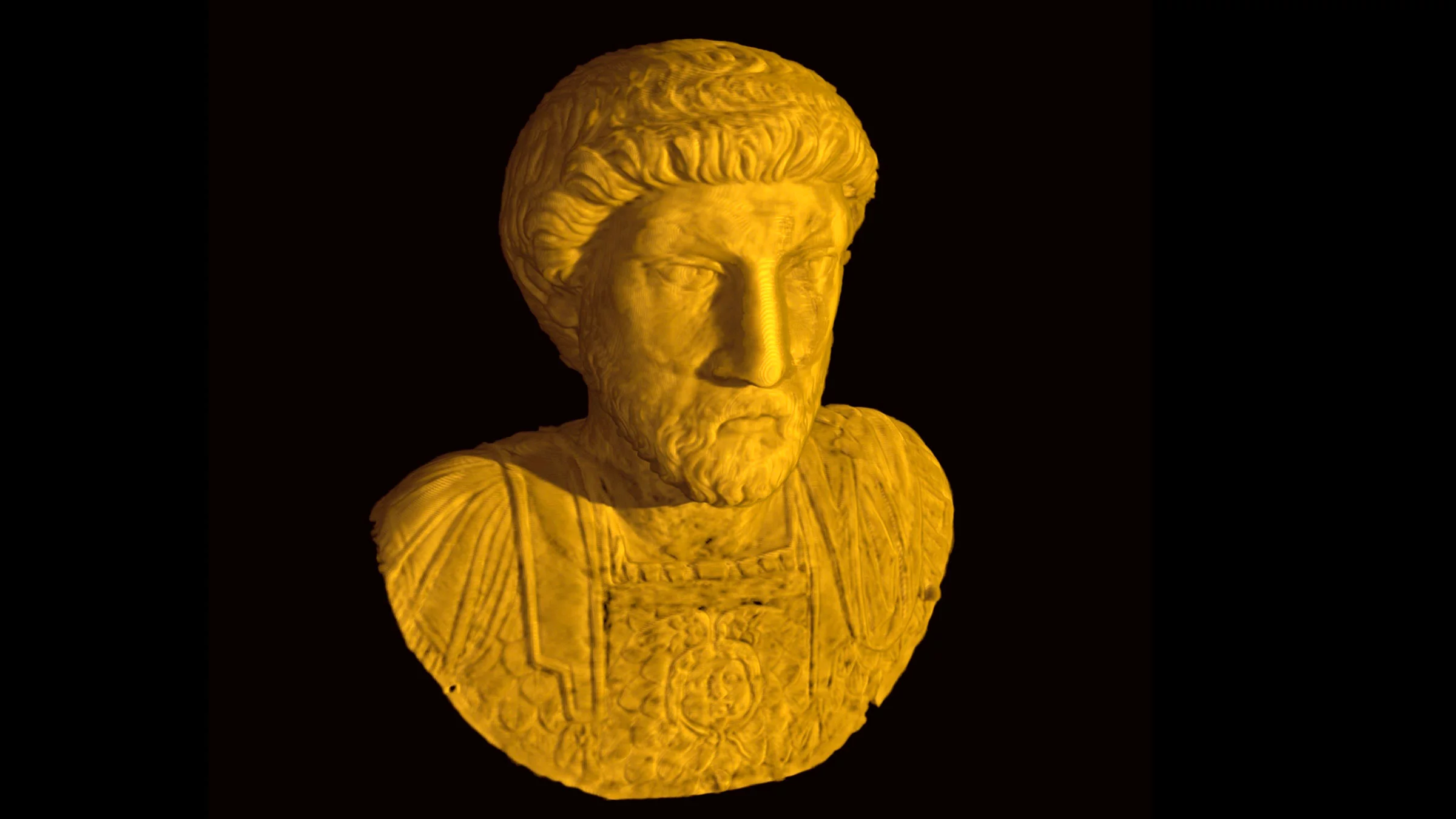
A bust of the Roman Emperor Marcus Aurelius. Neutrons made it possible to see right through this statue, which is fashioned of pure gold.
- Meinrad Eberle became the new Director. This ETH professor and mechanical engineer aimed to give PSI a clear identity as a research institute and user laboratory with a world-wide presence. The main emphasis was placed on particle physics and research into the structure of solids and bio-molecules, as well as in energy technology.
- Tracers developed at PSI for medical PET studies led to internationally-recognised pharmacological discoveries towards a better understanding of Parkinson's disease.
- The Swiss Federal Interim Storage Facility for low and intermediate level radioactive waste from medical, industrial and research activities (the BZL) was put into operation.
- PSI also played its part in environmental research. The subject of air pollution was studied in depth through the examination of ice layers in the Arctic and on Alpine glaciers, as well as by measurements taken from balloons.
- Combustion processes were also analysed at PSI in order to make it possible to construct low-emission heating systems and engines for vehicles.
- Thanks to its extensive competence in materials research, PSI was regularly asked to investigate historical findings. For example, the radiocarbon method at the TANDEM accelerator was used to make a precise determination of the age of
Ötzi
– theIce Mummy
, found in 1991. - Construction starts at the large PANDA facility. The facility is intended to investigate passive safety systems for advanced light water reactors for nuclear power plants.
1991
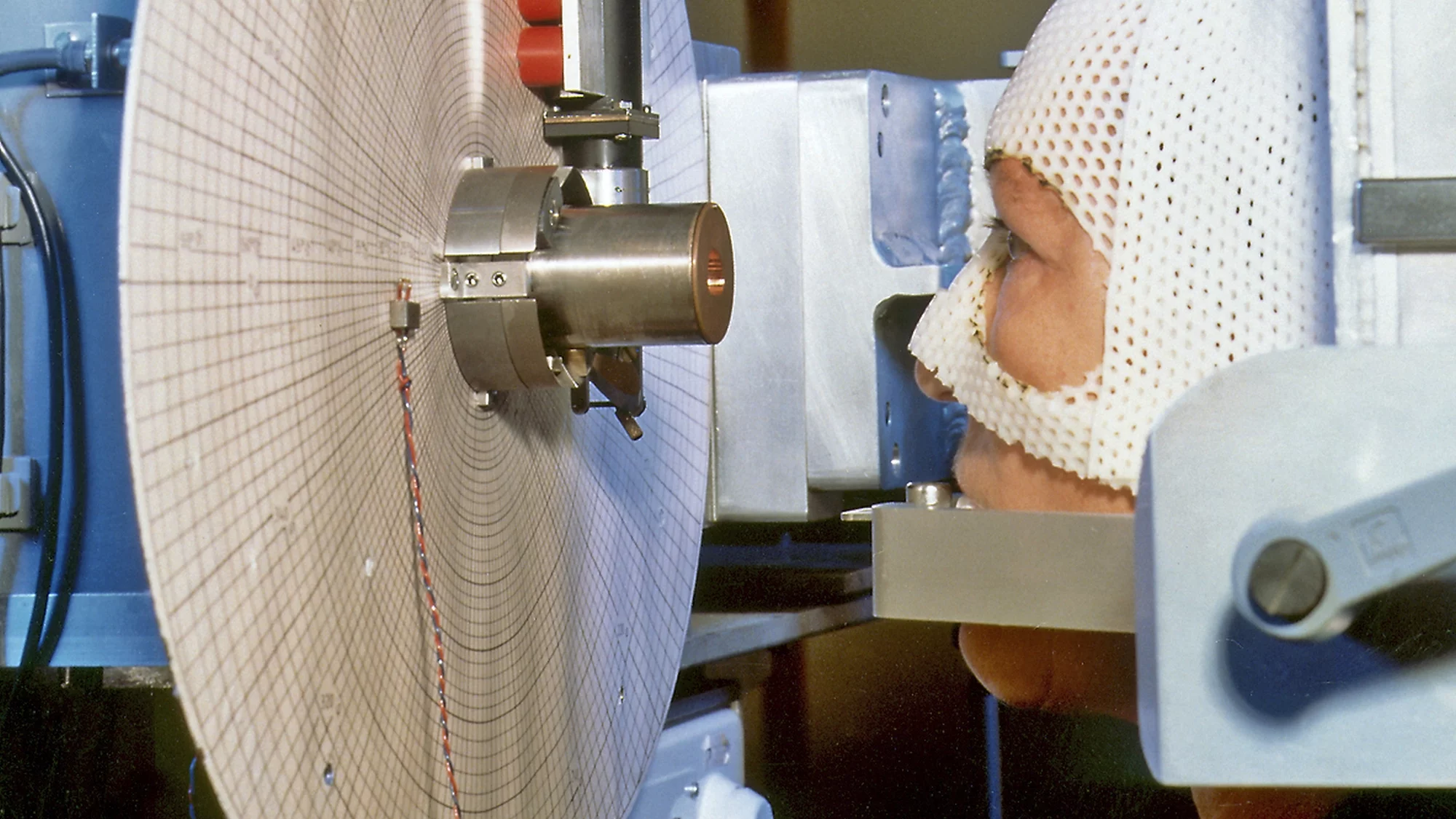
- Resignation of Director Anton Menth, Wilfred Hirt became Interim Director.
- 1.5mA proton current achieved for the first time at Injector II, as well as 1mA in the ring cyclotron. This was a pre-requirement for a spallation neutron source (SINQ) that would be internationally competitive.
- Establishment of a joint Institute for medical radio-biology with the University of Zurich, leading to world-wide recognition of its research on the diagnosis and treatment of cancer.
- The 1000th patient with an eye tumour was treated at the OPTIS proton therapy facility.
1990
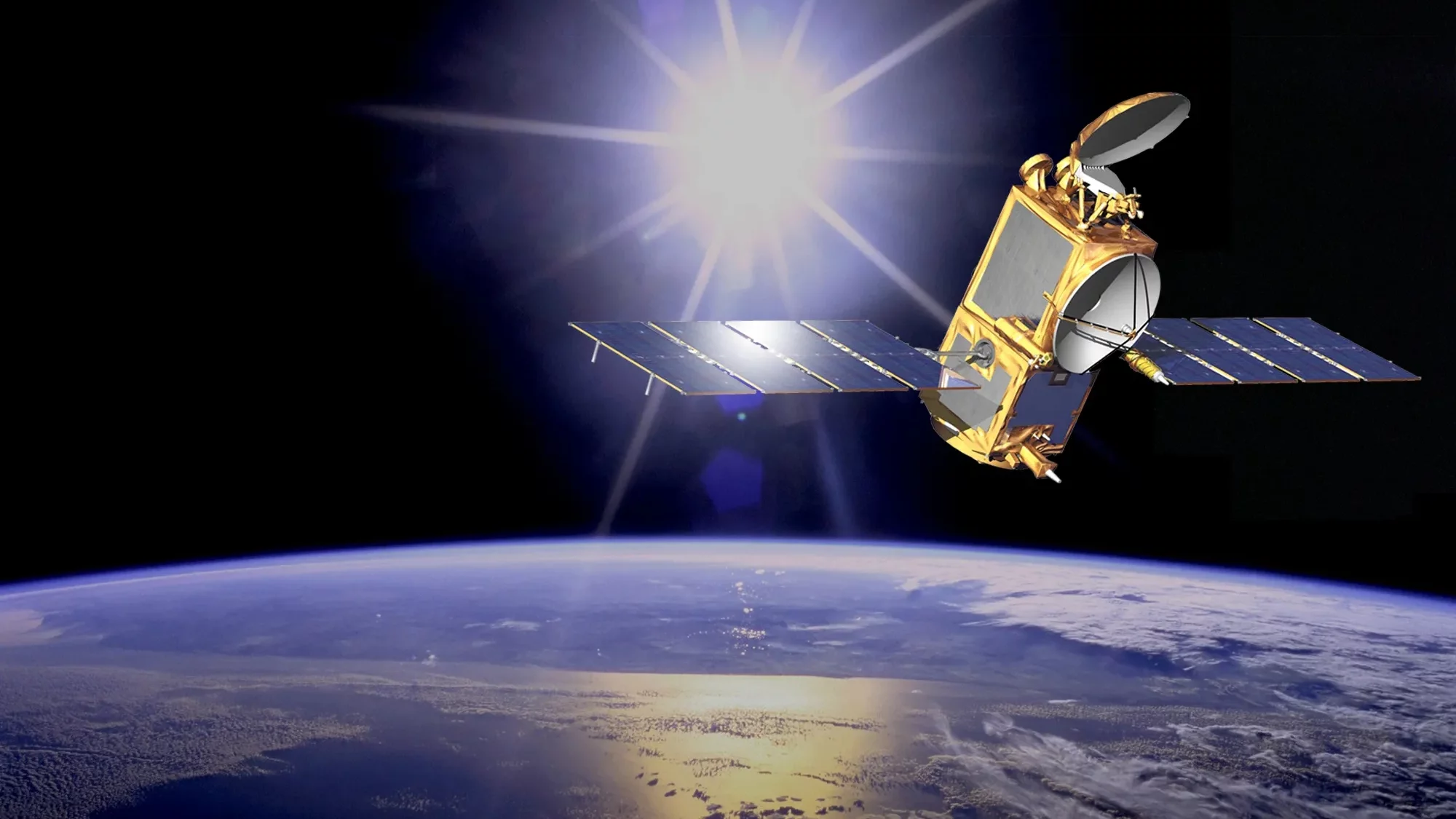
- Anton Menth took over as the new Director on 1st April 1990, replacing Jean-Pierre Blaser.
- Energy policy tug-of-war over the balance between nuclear and non-nuclear research.
- Experimental verification of the Spot-Scanning technique for the subsequent irradiation of deep-seated tumours with a proton beam.
- First-time application of Positron Emission Tomography to visualize biochemical processes in the body in the form of images.
- PSI was involved at the very forefront of space research, building the detectors in the EUVITA telescope for the Russian
Spectrum-X-G
satellite. Later, PSI also supplied detectors to NASA and ESA, which were used to analyse cosmic radiation, thus opening new windows onto the universe.
1989
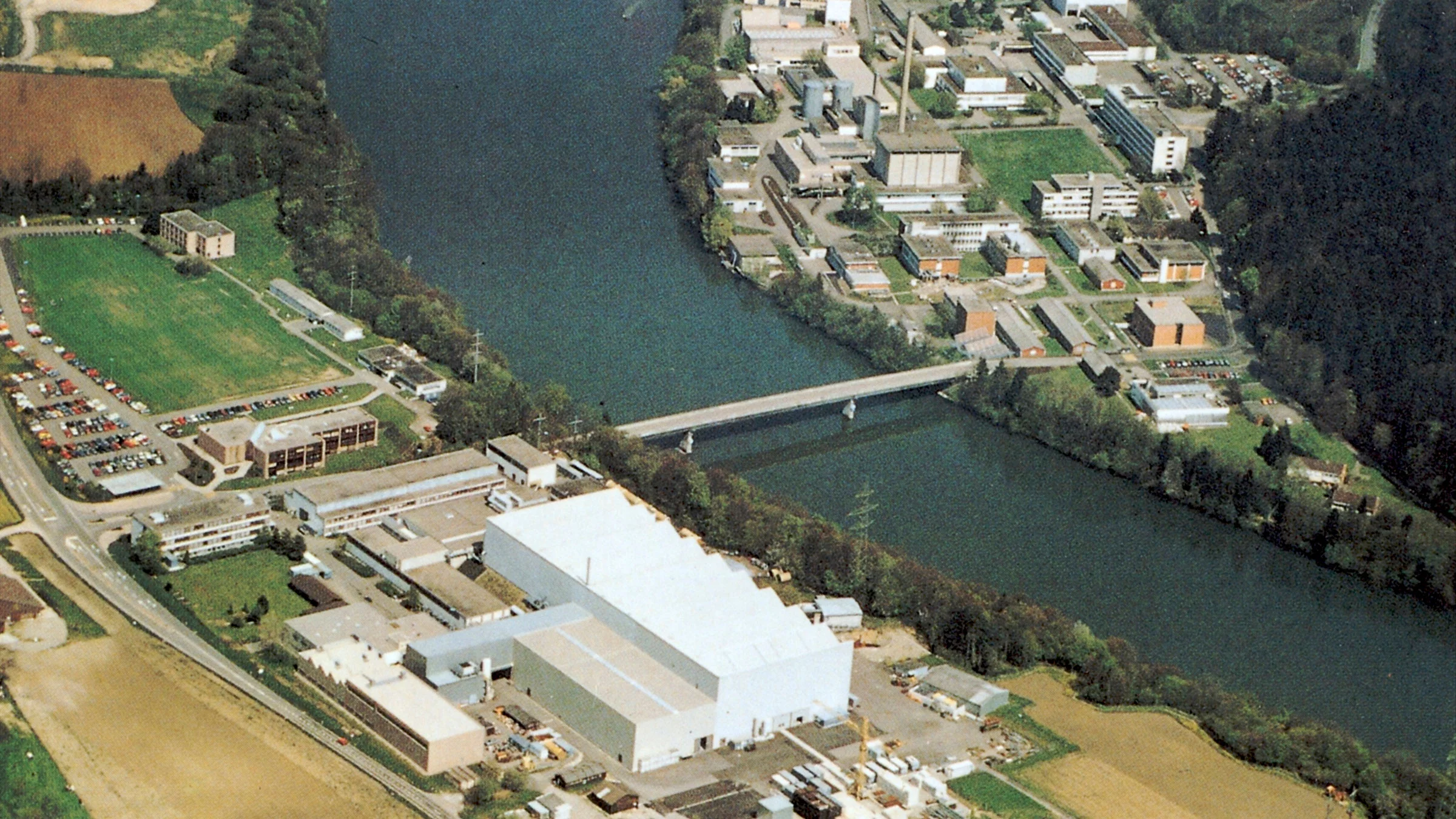
- New, future-oriented areas of research in solid-state physics, bio-medicine, renewable energy and environmental sciences were established at PSI after the merger. They were all able to benefit from the facilities available, some of which were the only ones of their kind in the world.
- Construction of the SINQ neutron source began, which was an international innovation in large research facilities, and would offer new opportunities for the investigation of materials to researchers from all over the world. The 60 million CHF facility had been planned for a very long time and the merger now made sufficient resources available to complete the project within eight years.
- Preparations began for upgrading the proton accelerator to 1MW operation.
- Development of the General Energy Research Department: Solar chemistry, electro-chemistry and combustion research/laser diagnostics.
1988
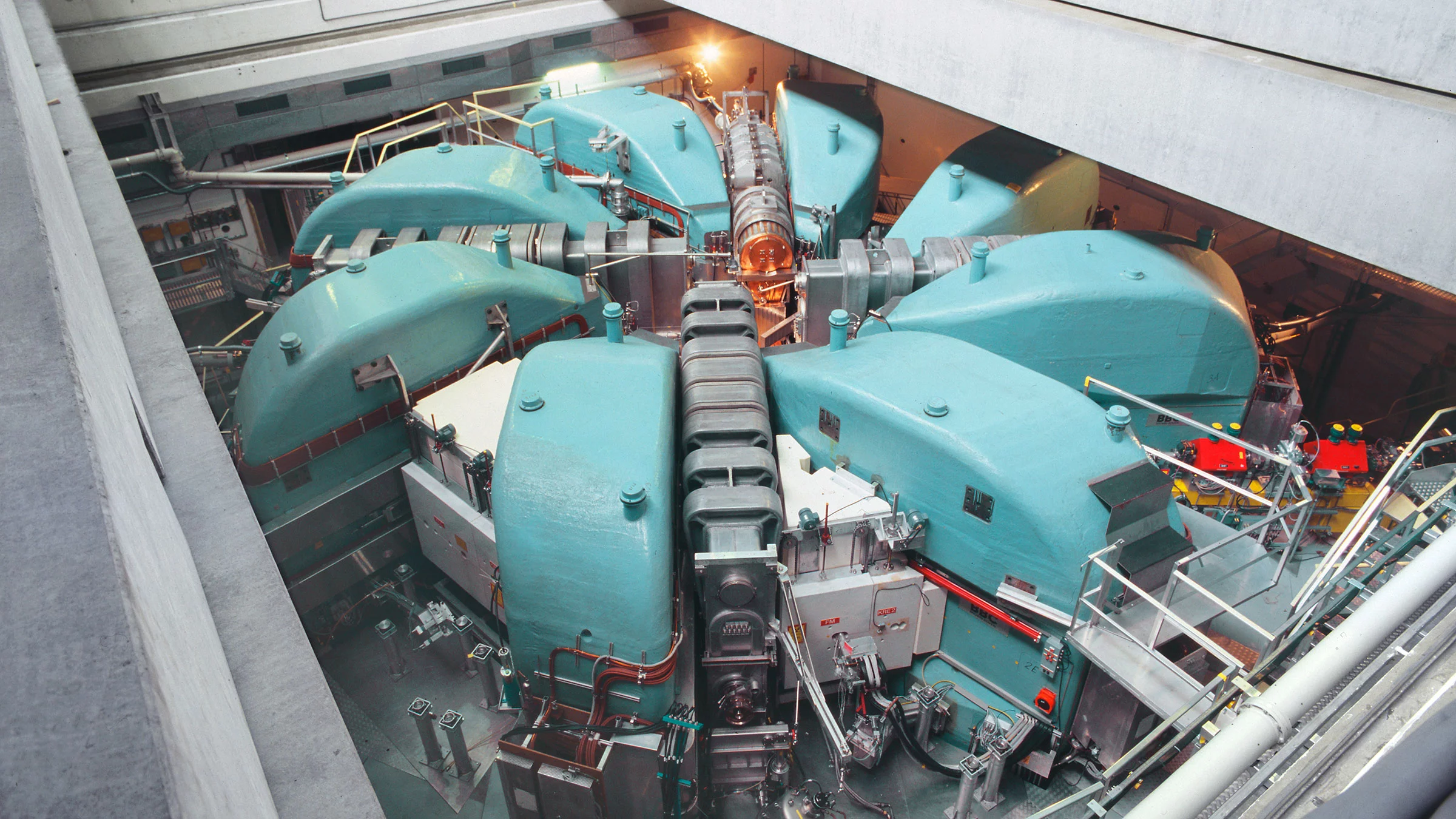
- On 1 January 1988, the Swiss Federal Institute for Reactor Research (EIR) and the Swiss Institute for Nuclear Research (SIN) merged to form the Paul Scherrer Institute, PSI. The lower valley of the Aare thus became the location for a major research institute that would soon gain an international reputation.
- The Institute was named after the Swiss physicist Paul Scherrer, who lived from 1890 to 1969. He taught and performed research at the ETH (the Swiss Federal Institute of Technology) and was well-regarded internationally, contributing greatly to the high standard of the natural sciences within Switzerland.
- The enormous importance of PSI to science in Switzerland was clear from the prominent figures who took part in its inauguration. The expectations placed on the new institute by politicians and those responsible for education were extremely high.
This is a chronological retrospect on PSI's historical milestones and a selection of its highlights during its first 35 Years. Our press releases report on current highlights.
